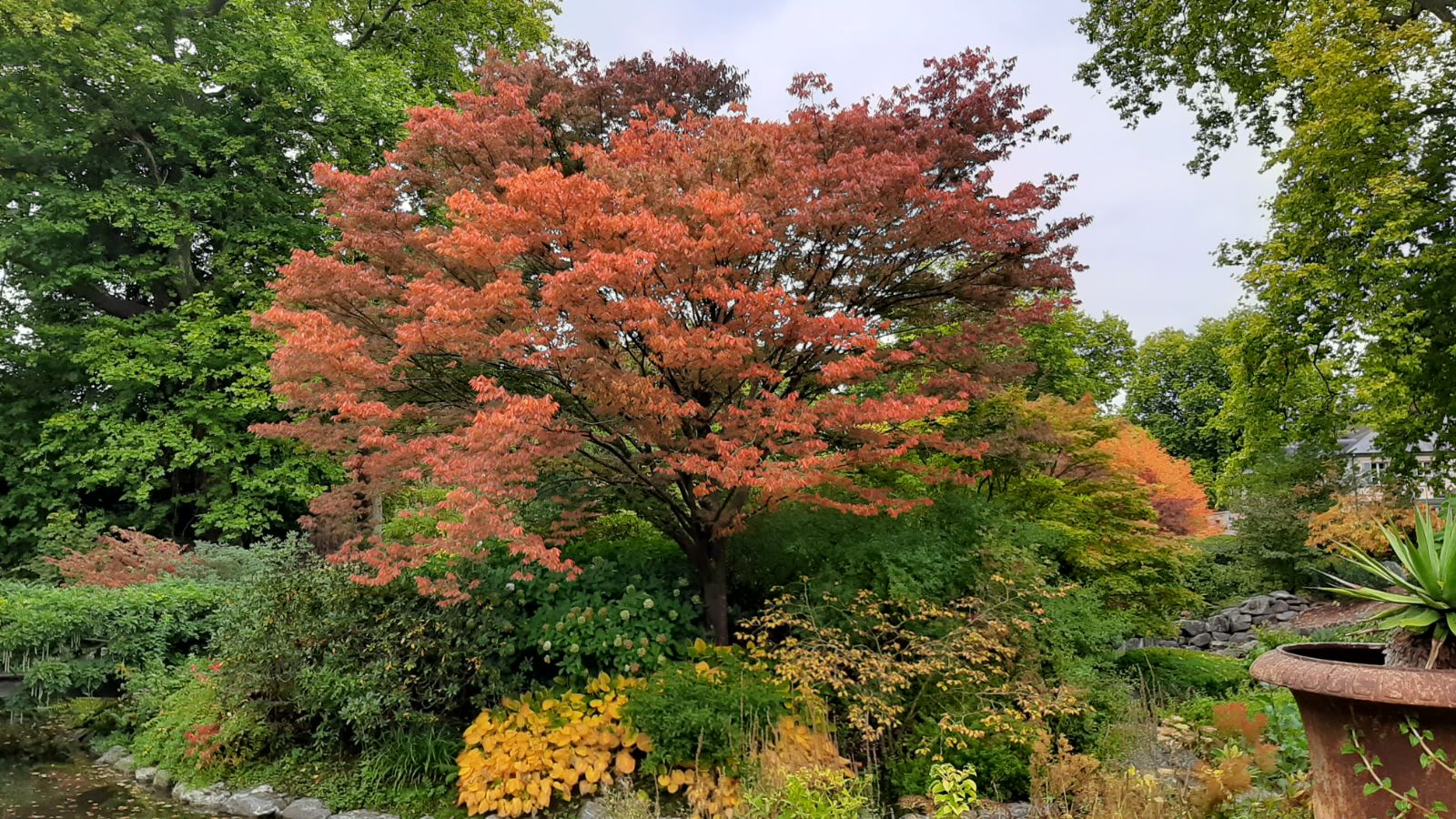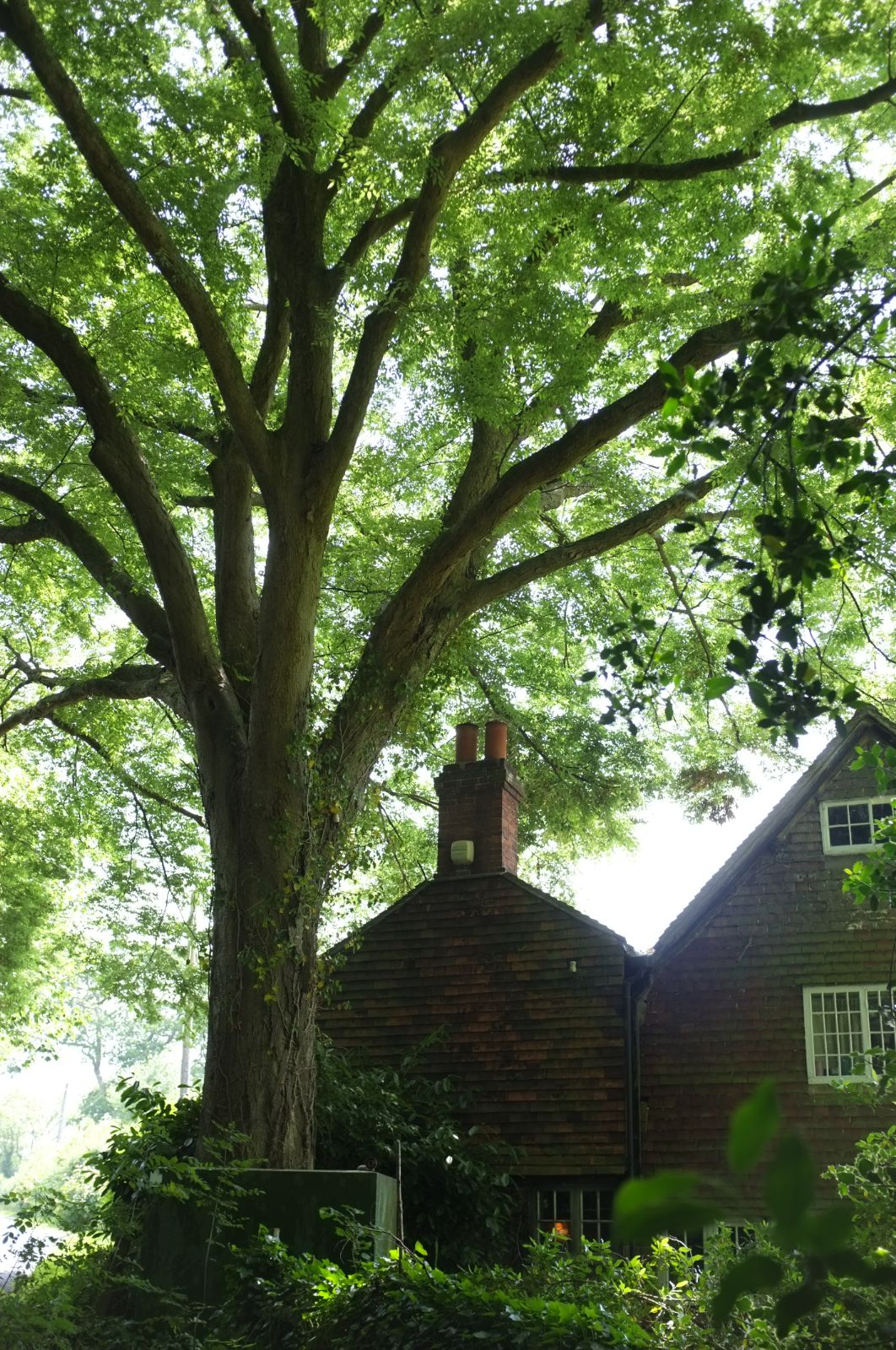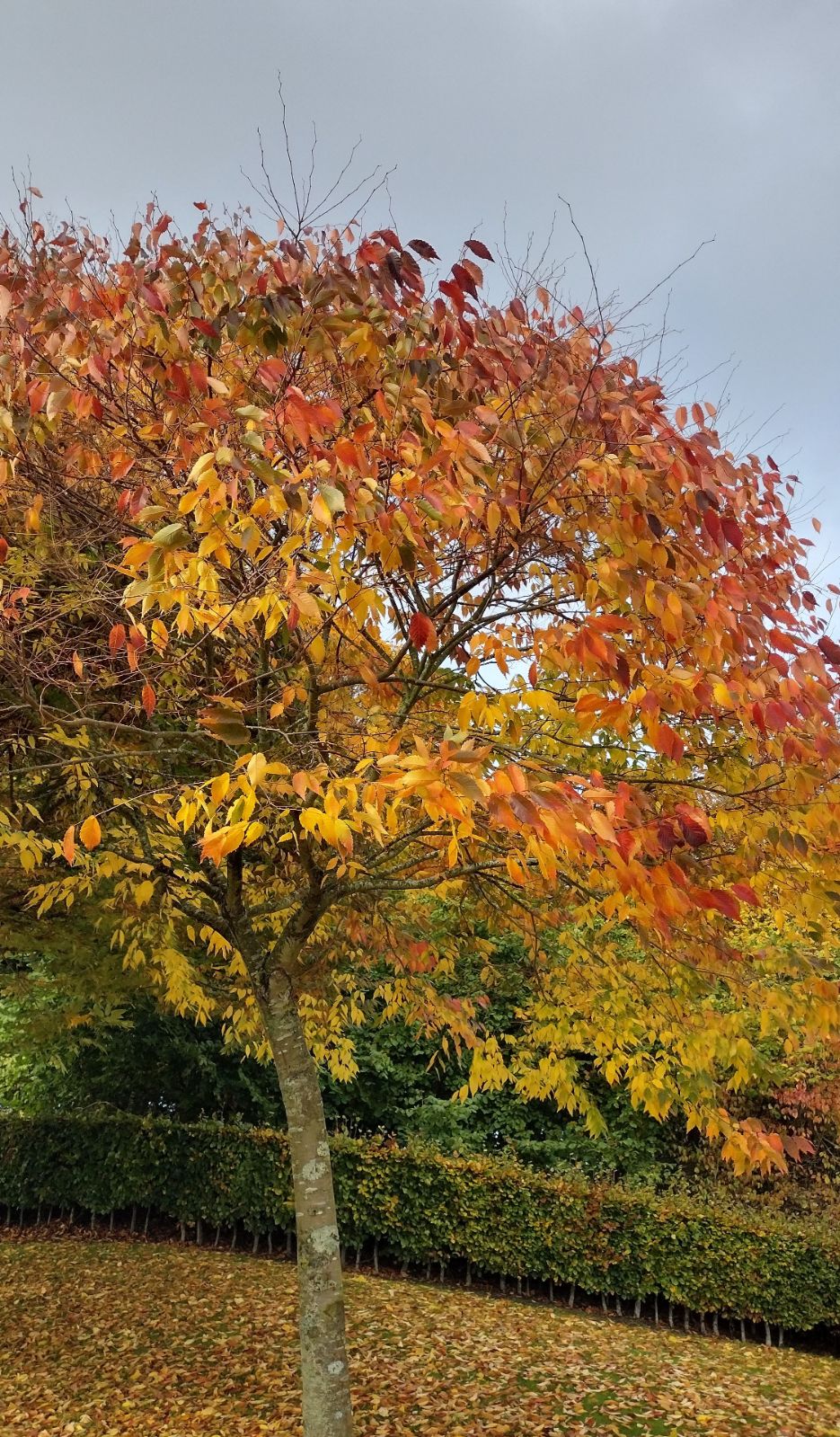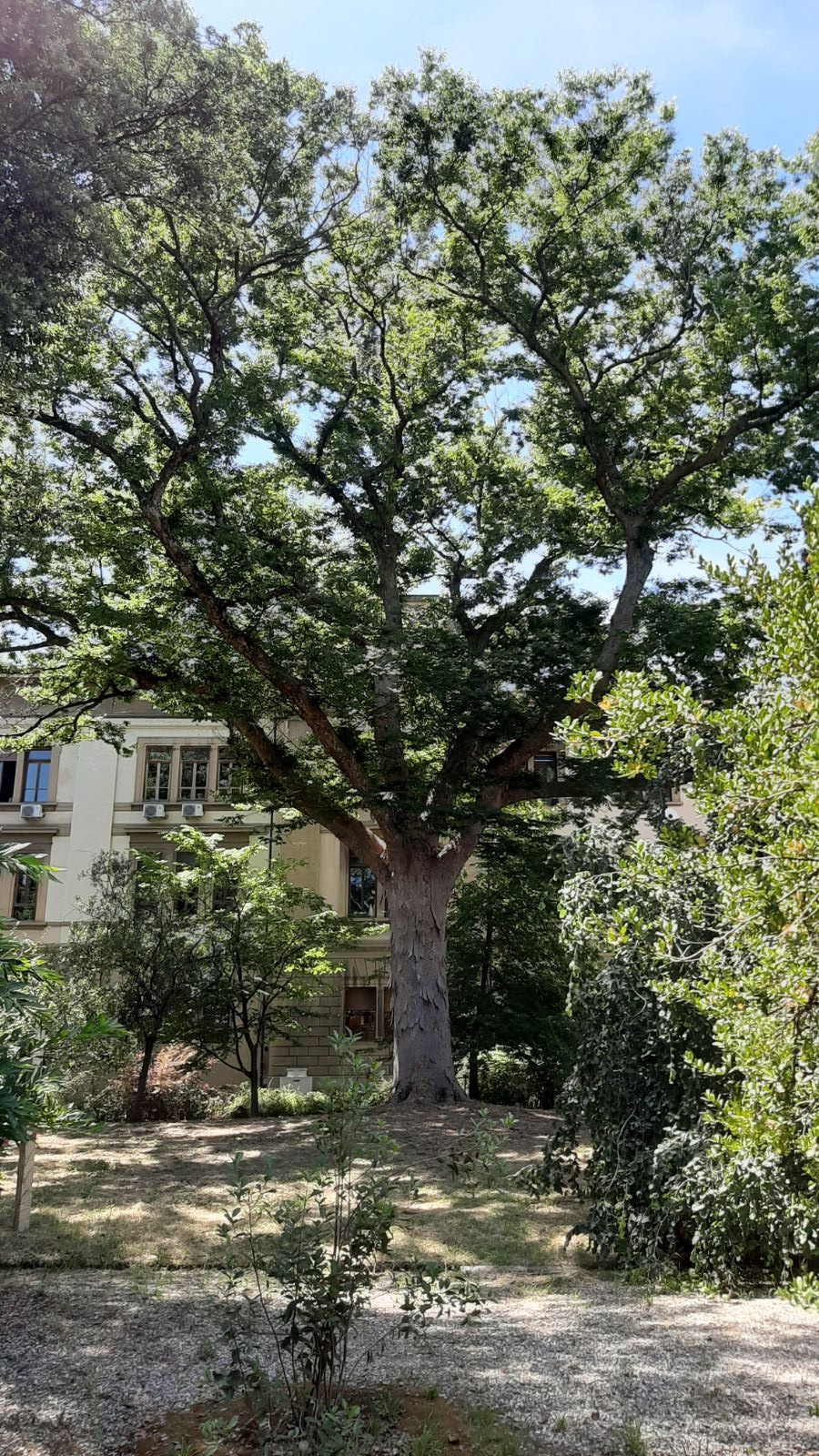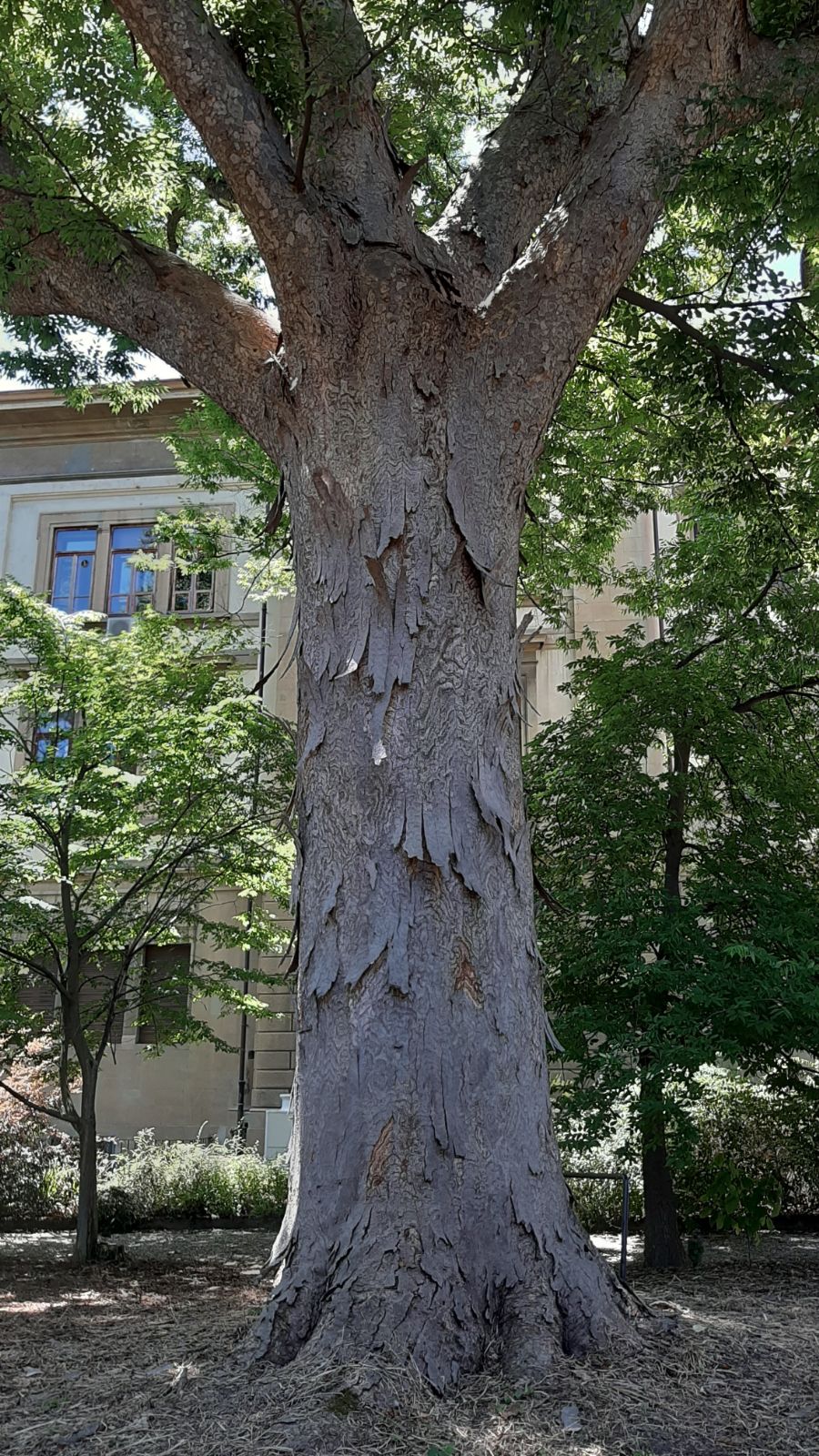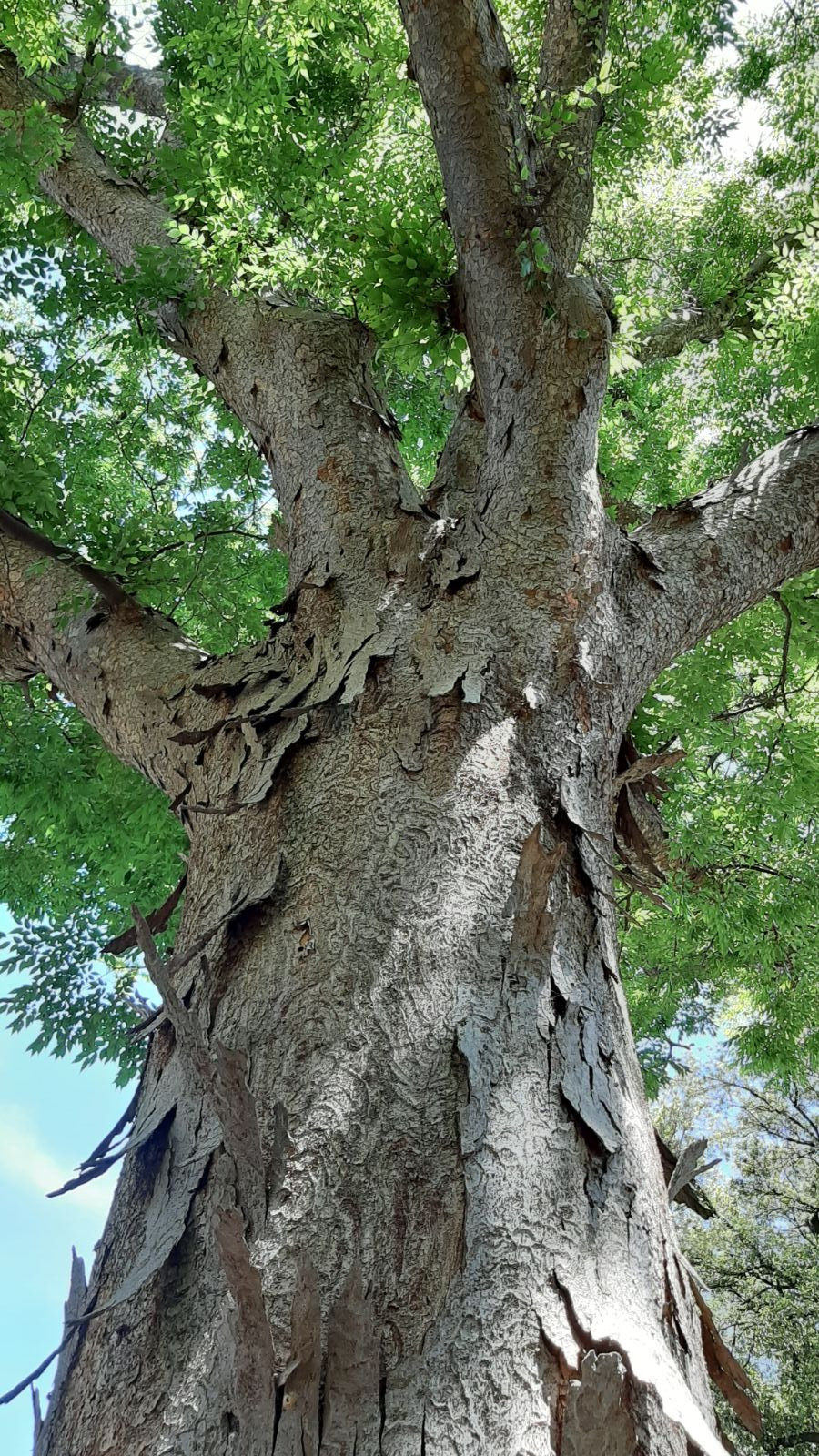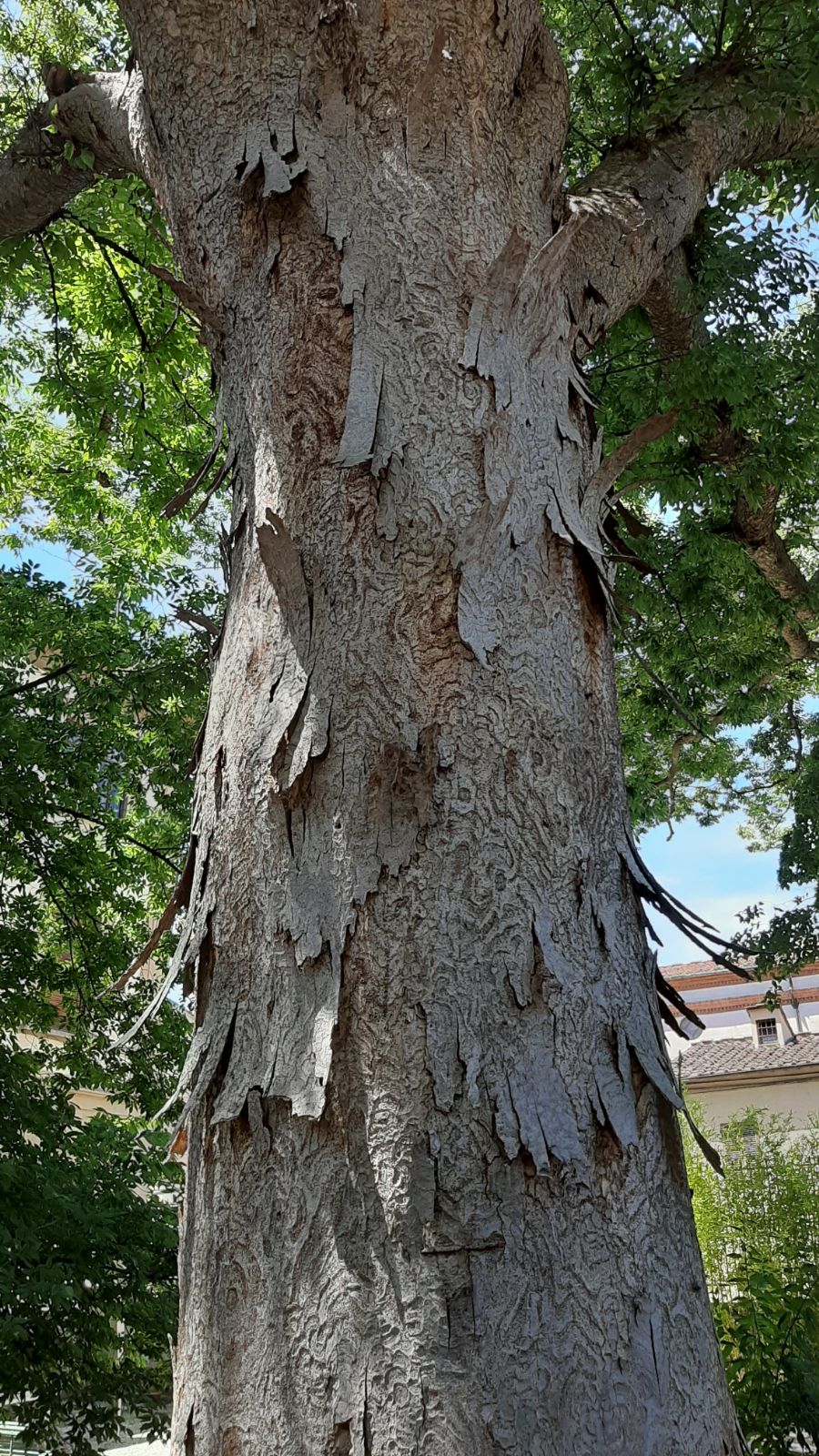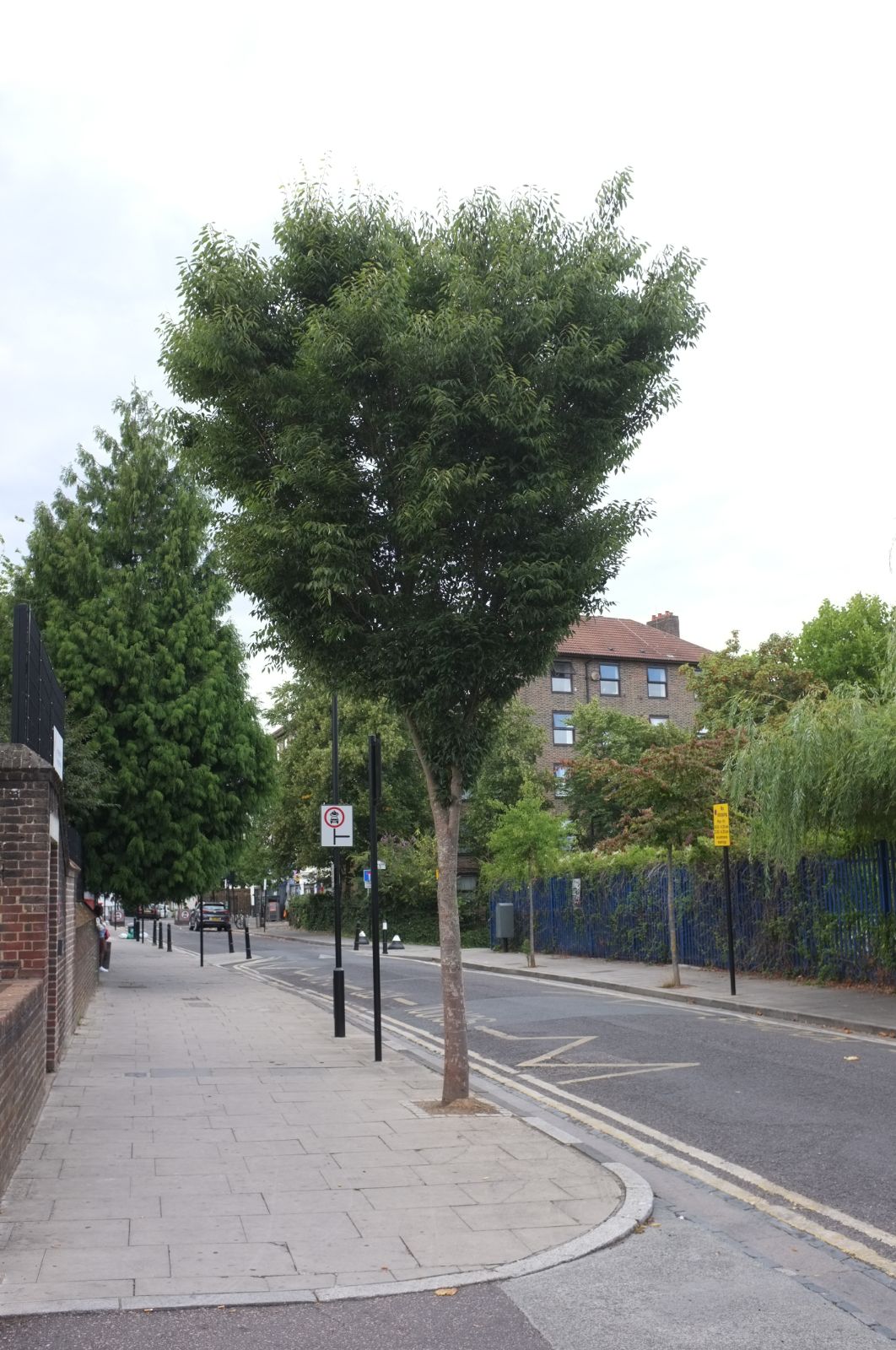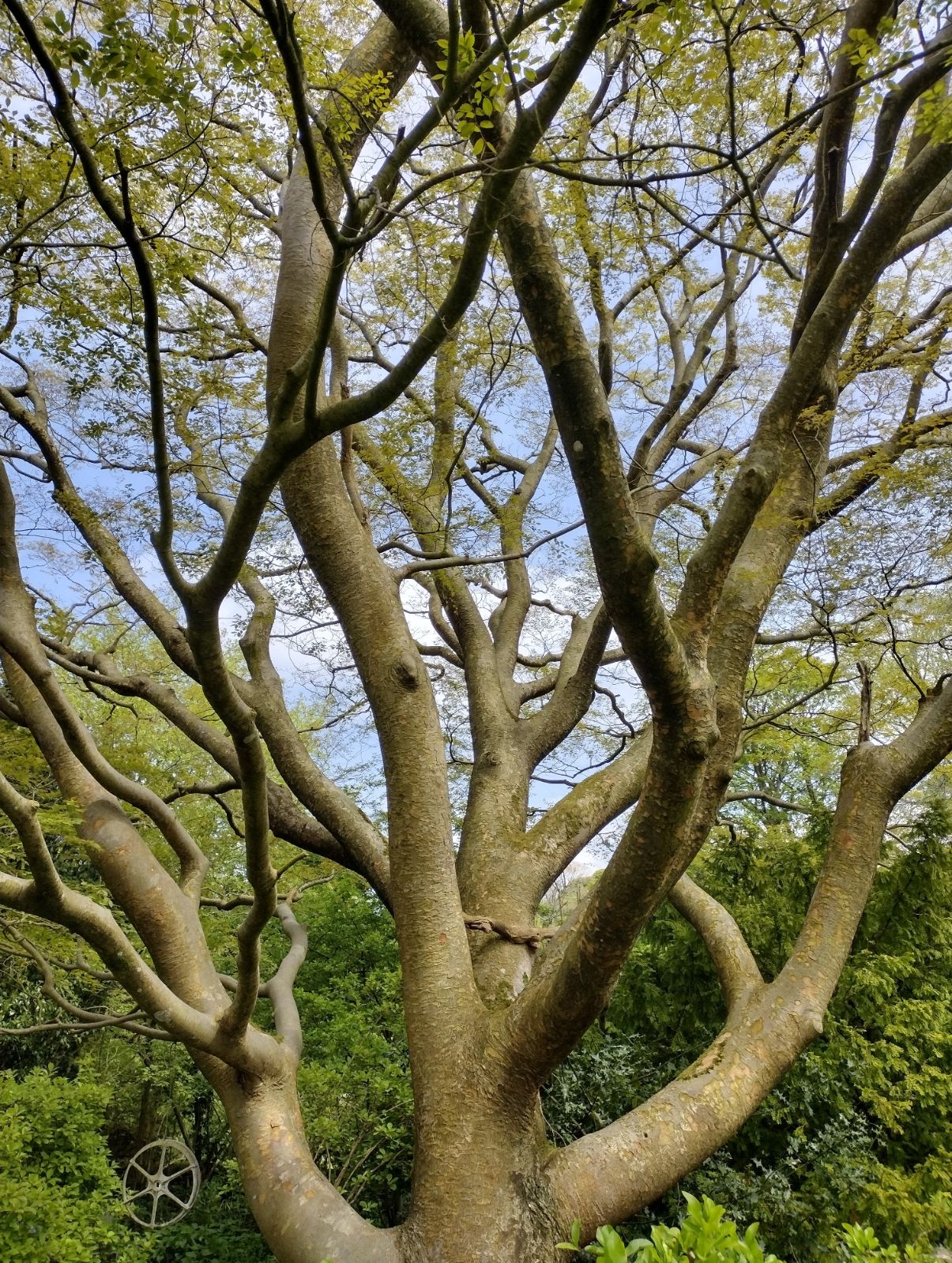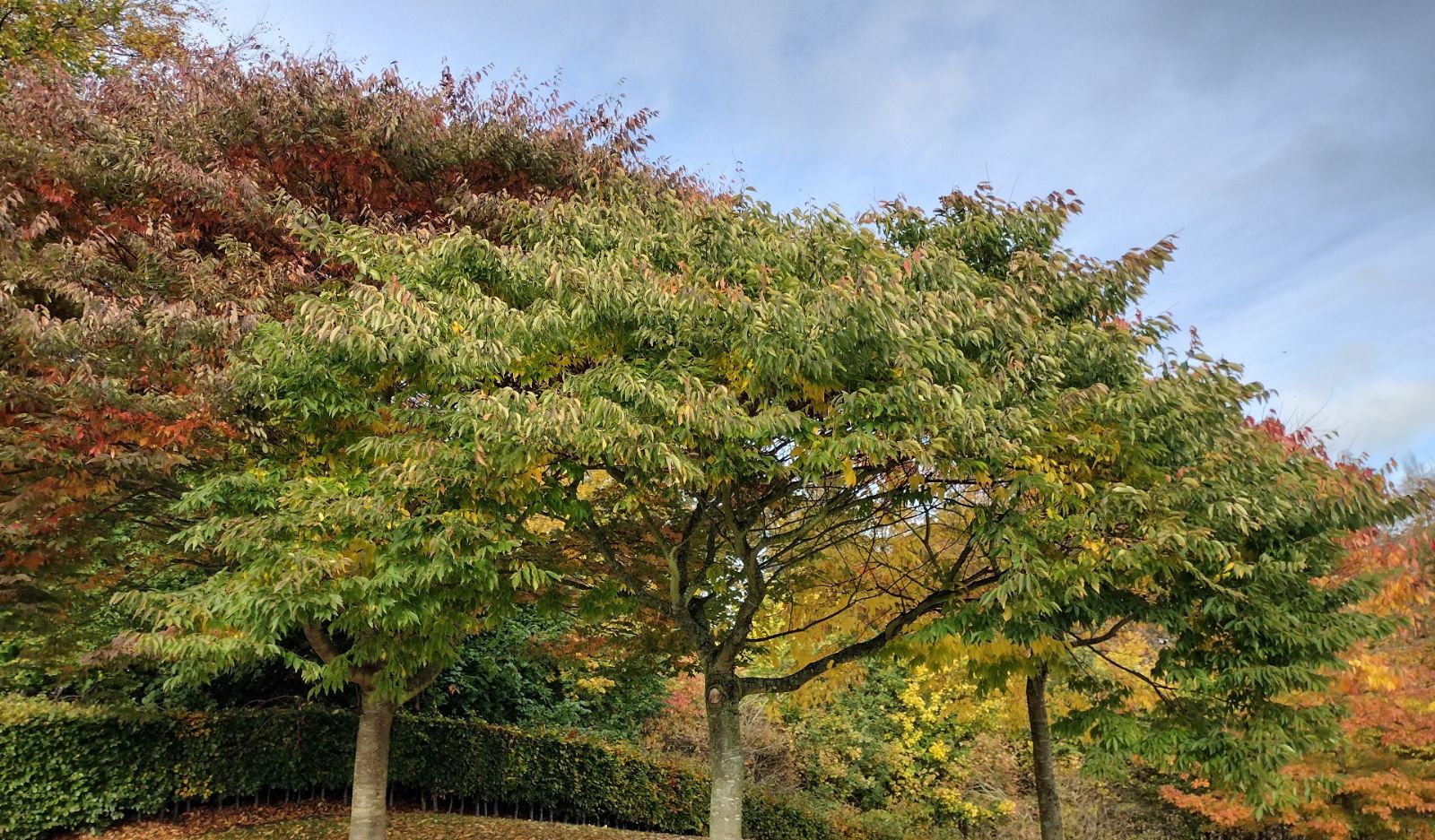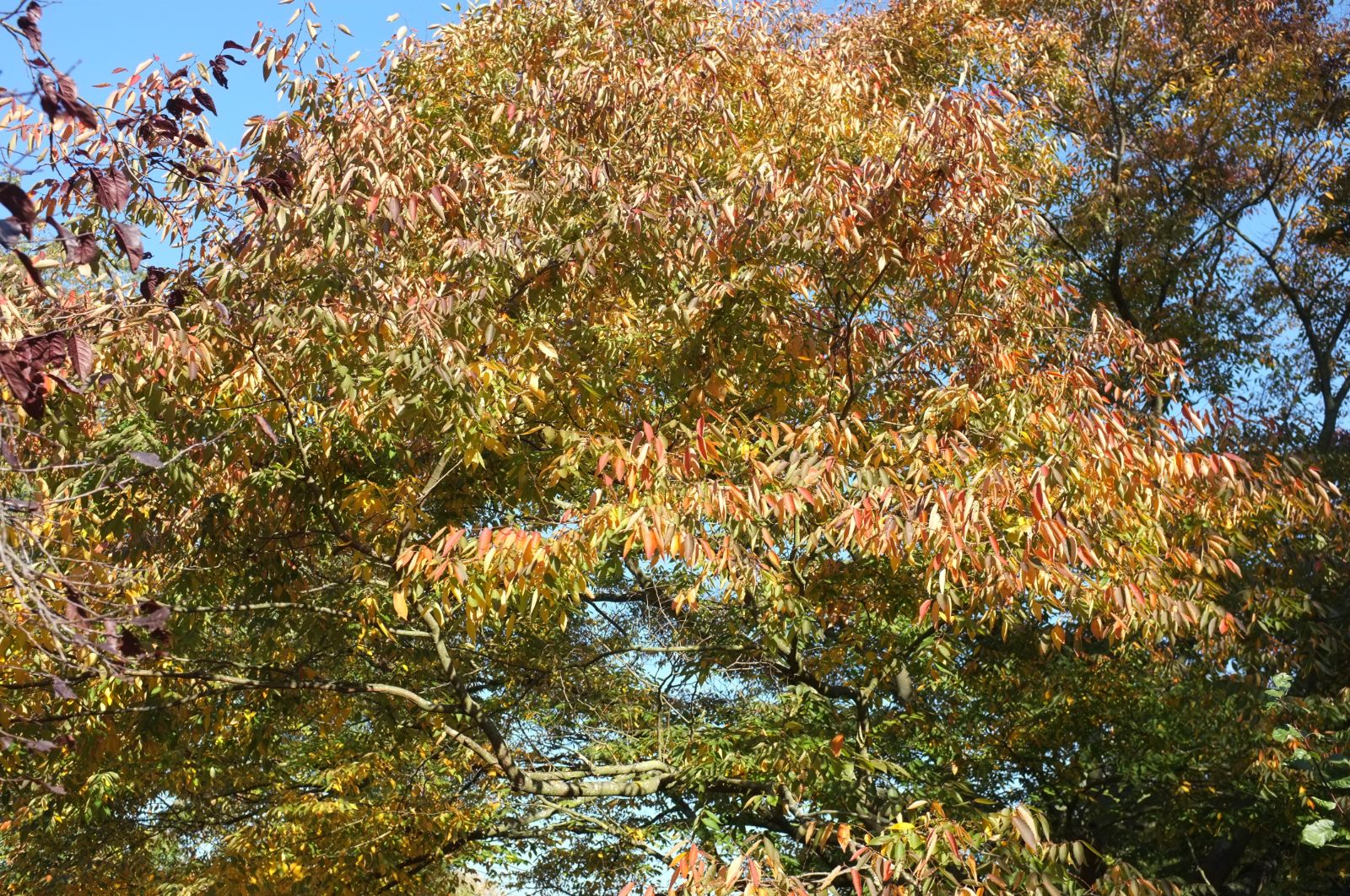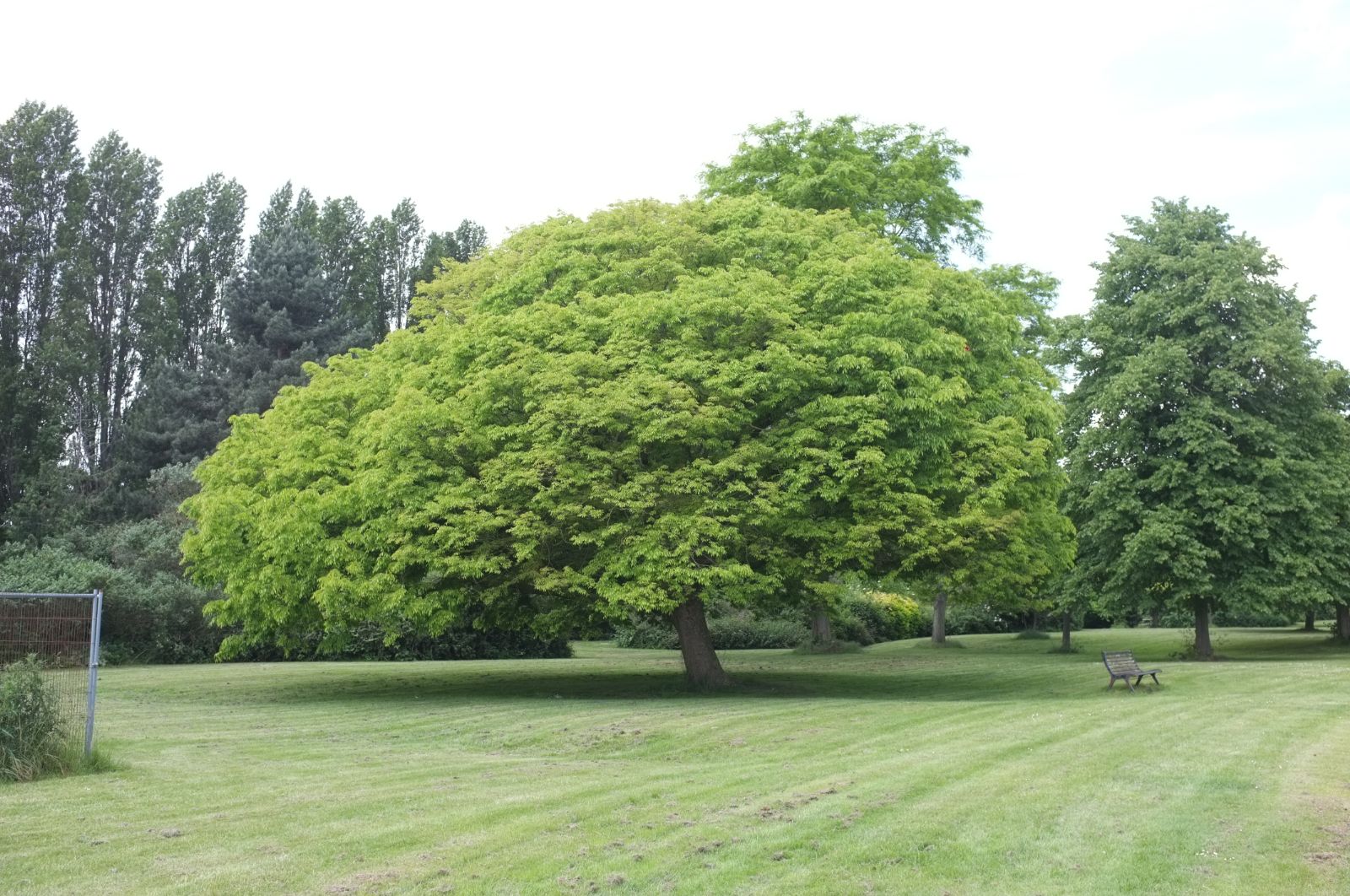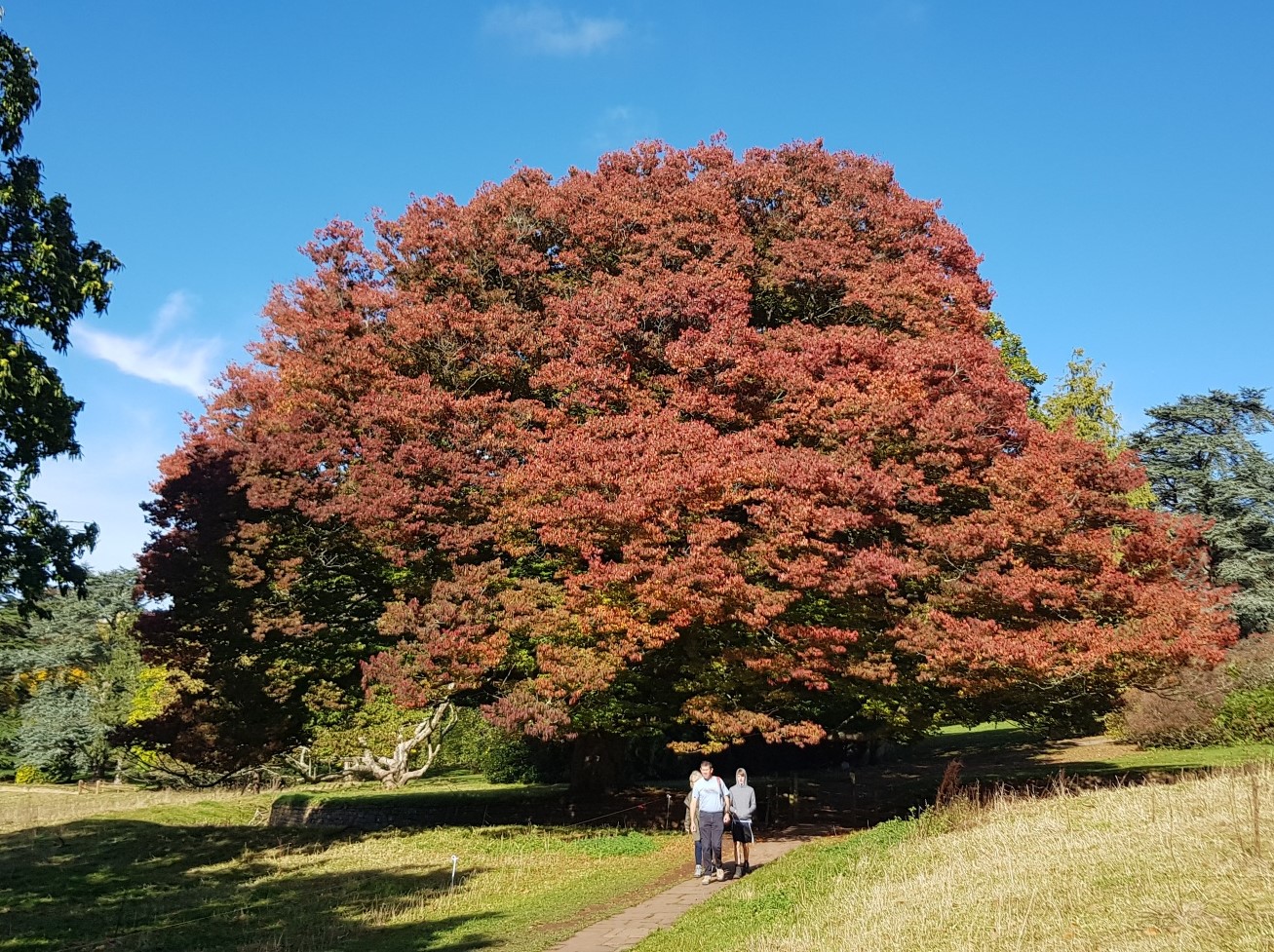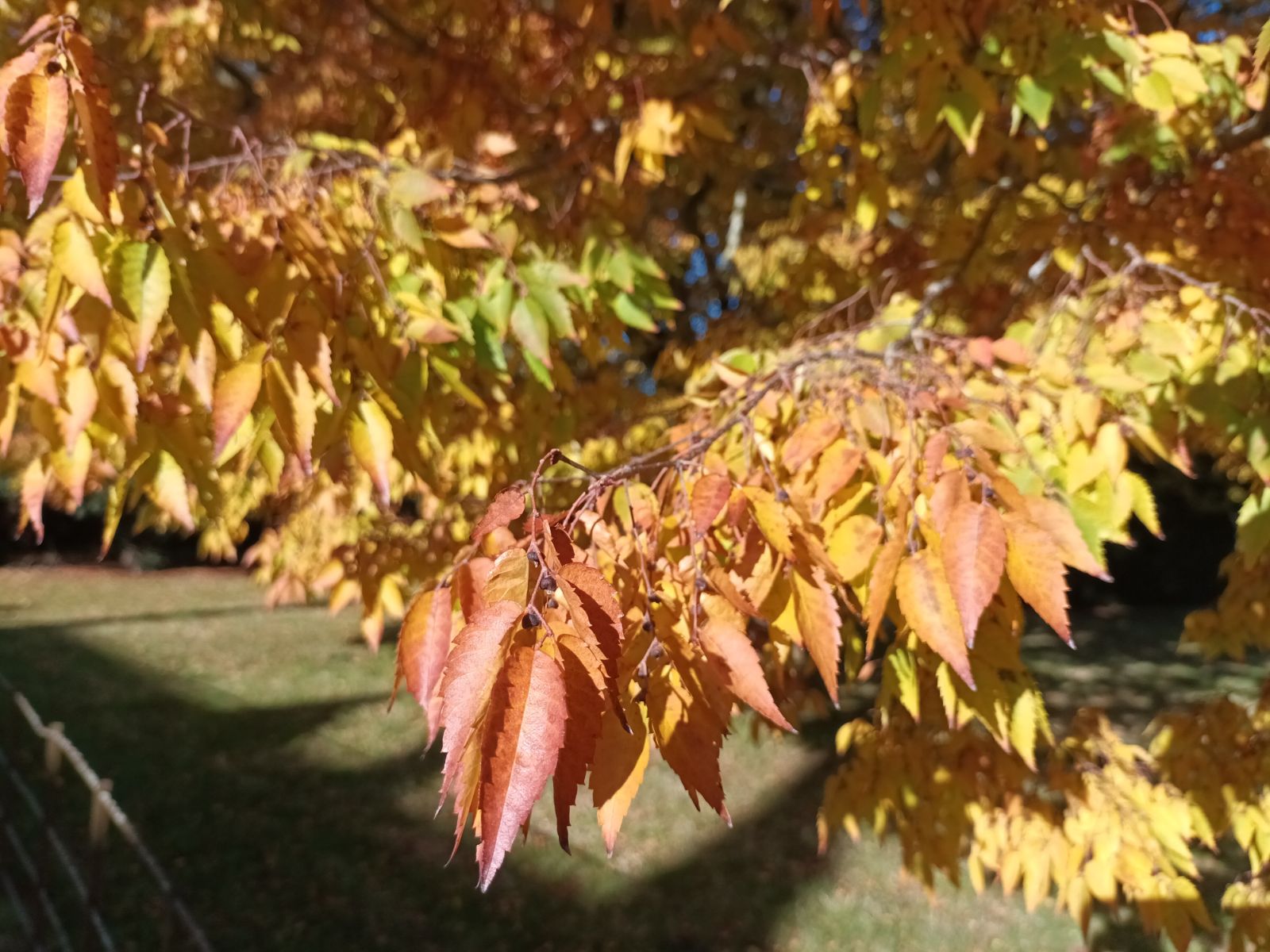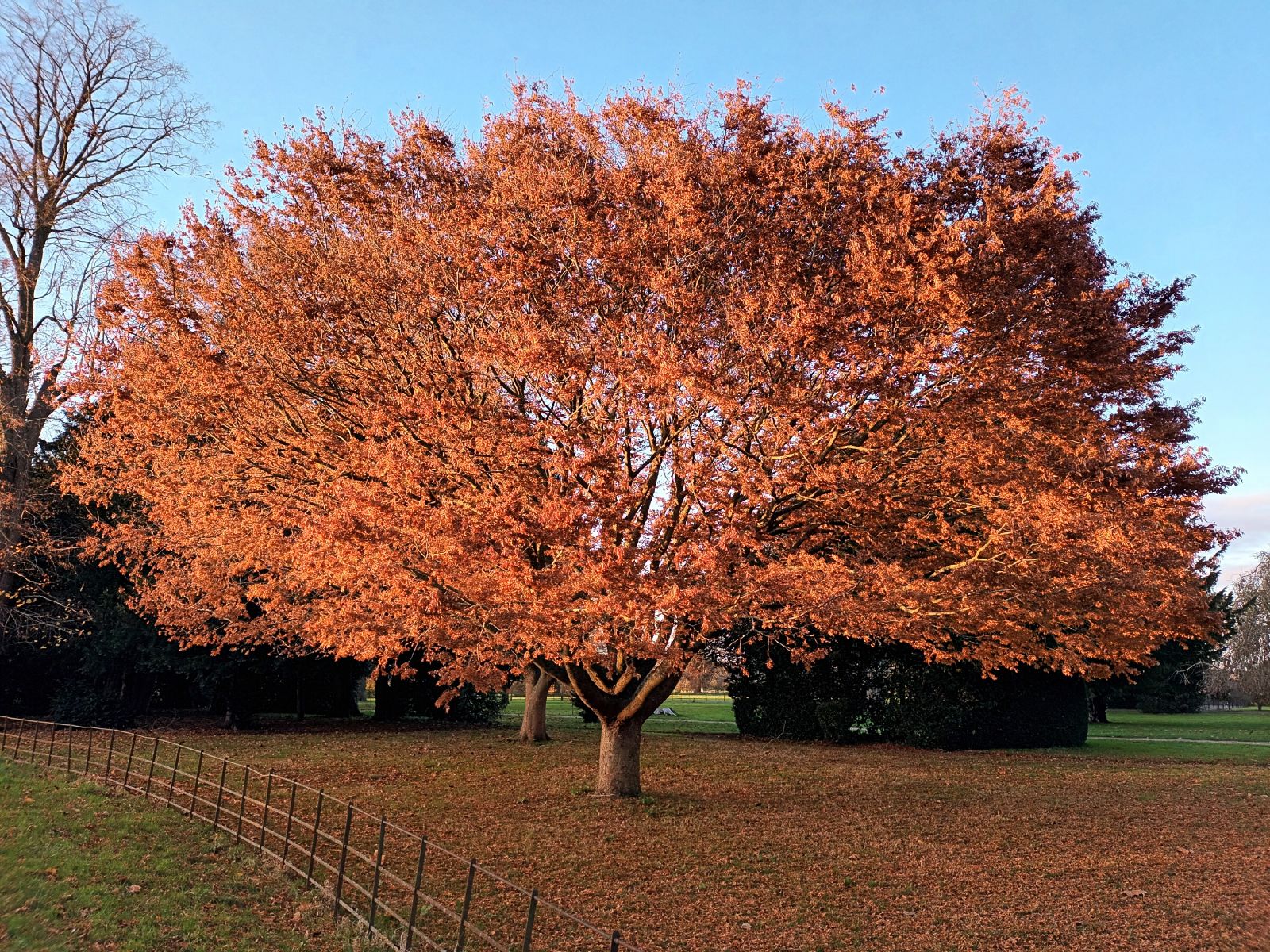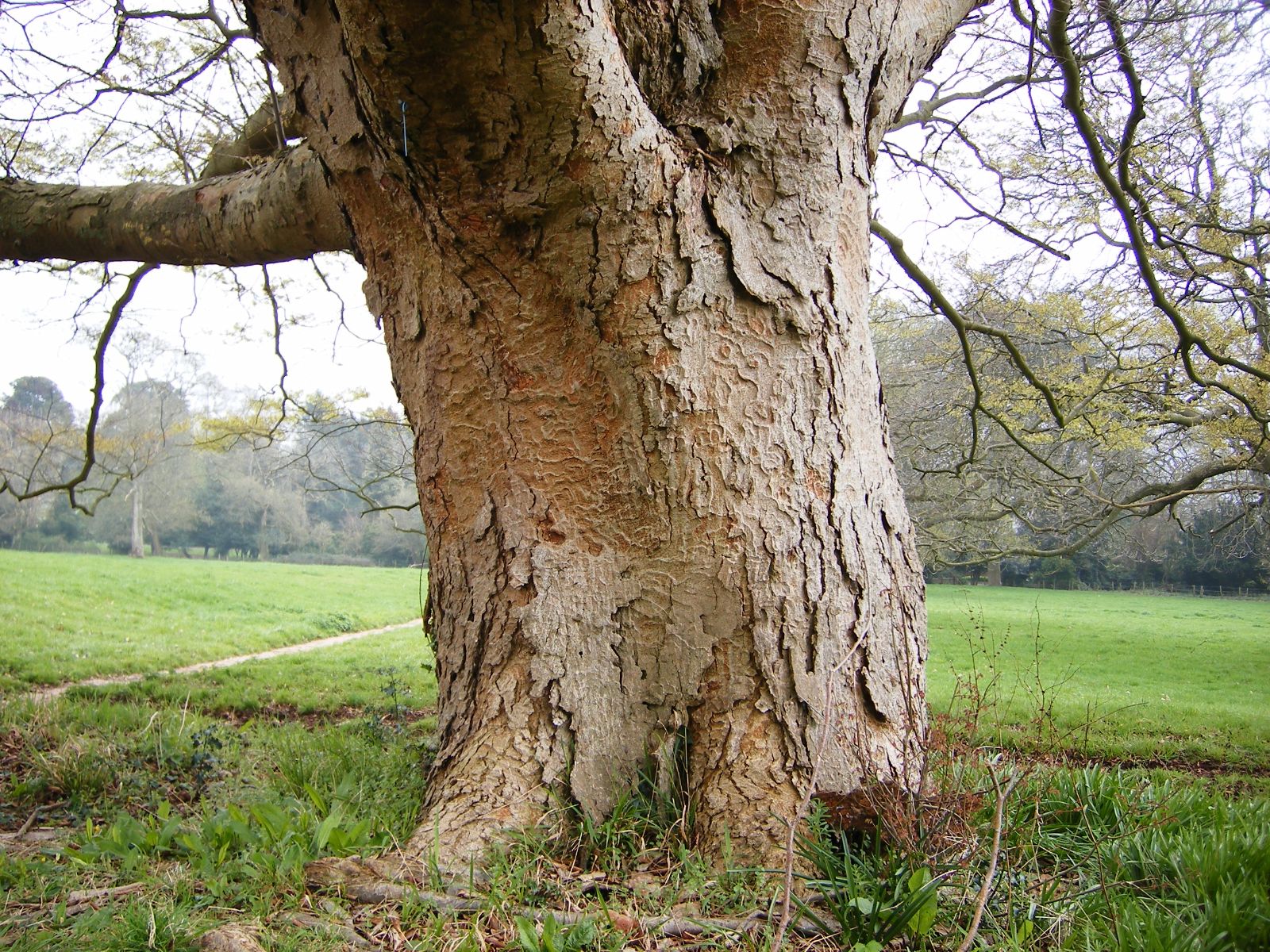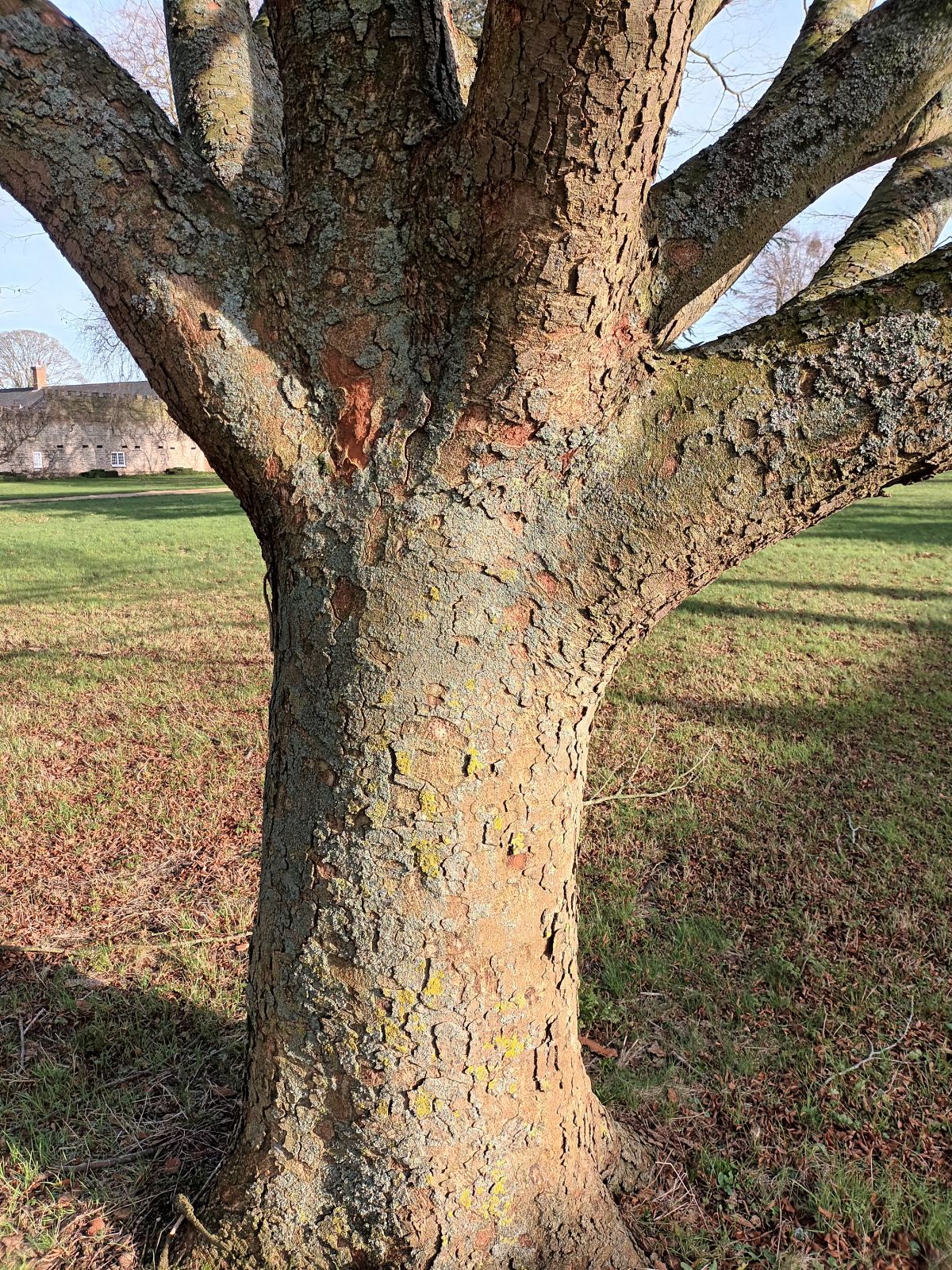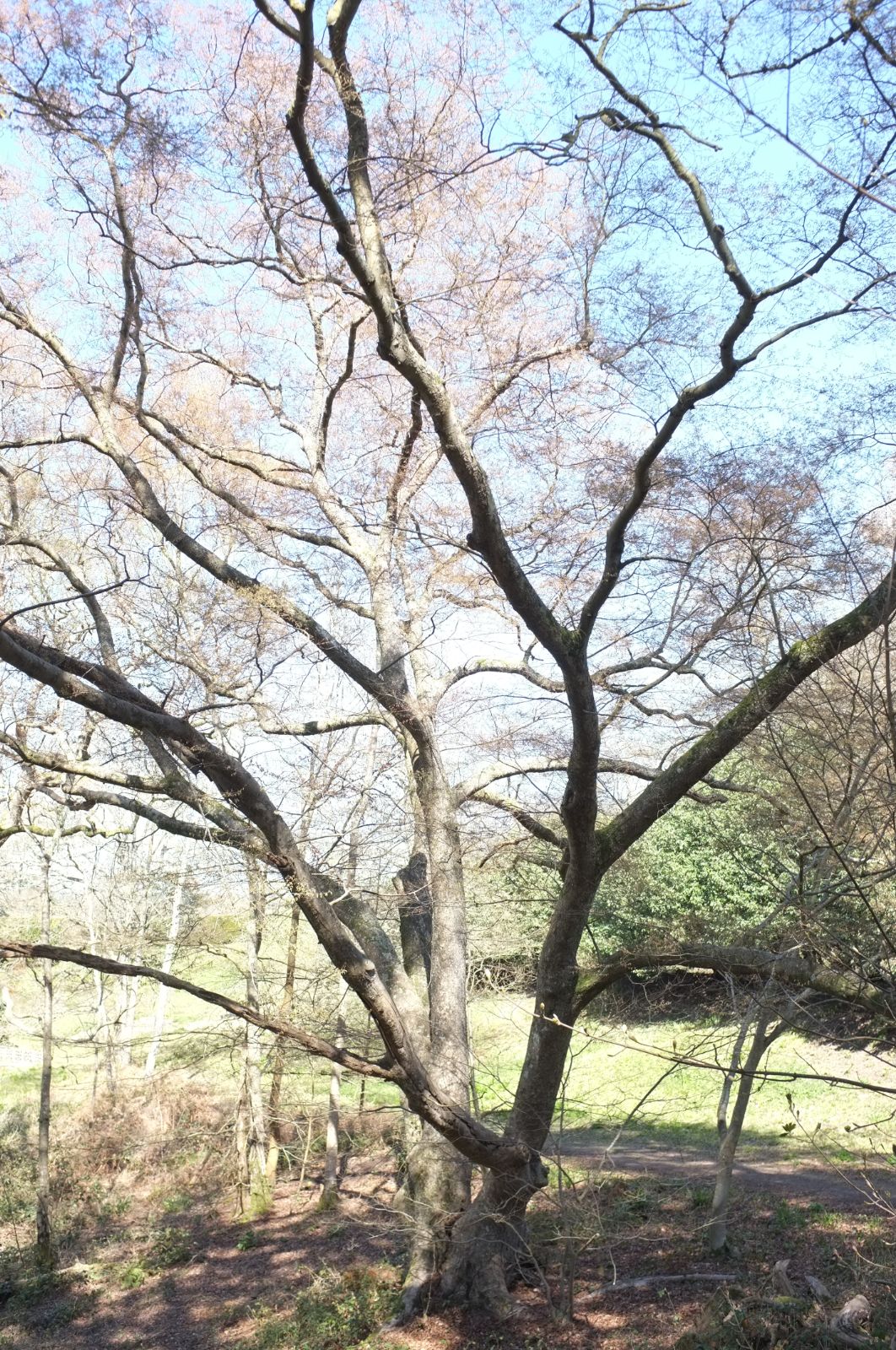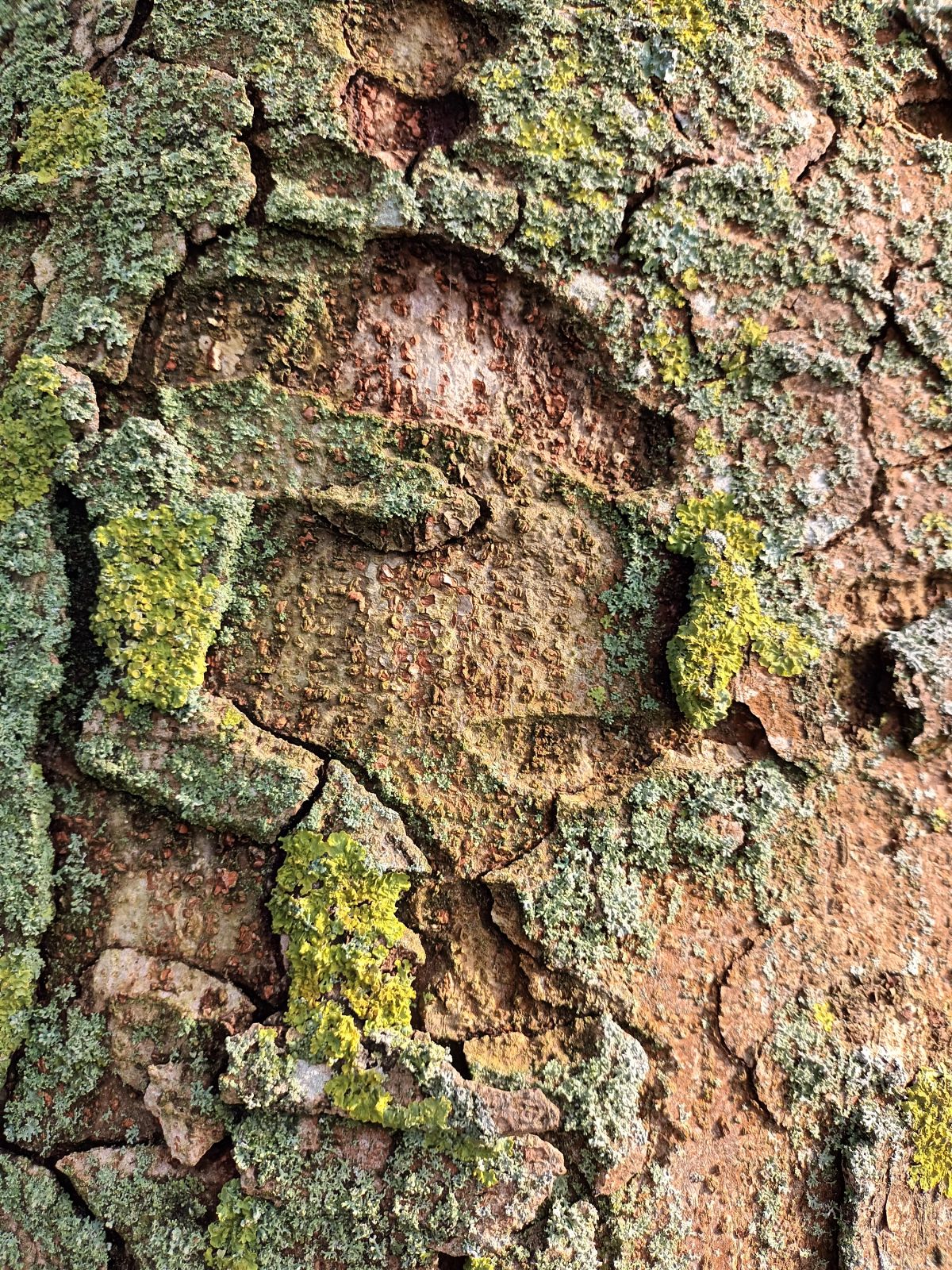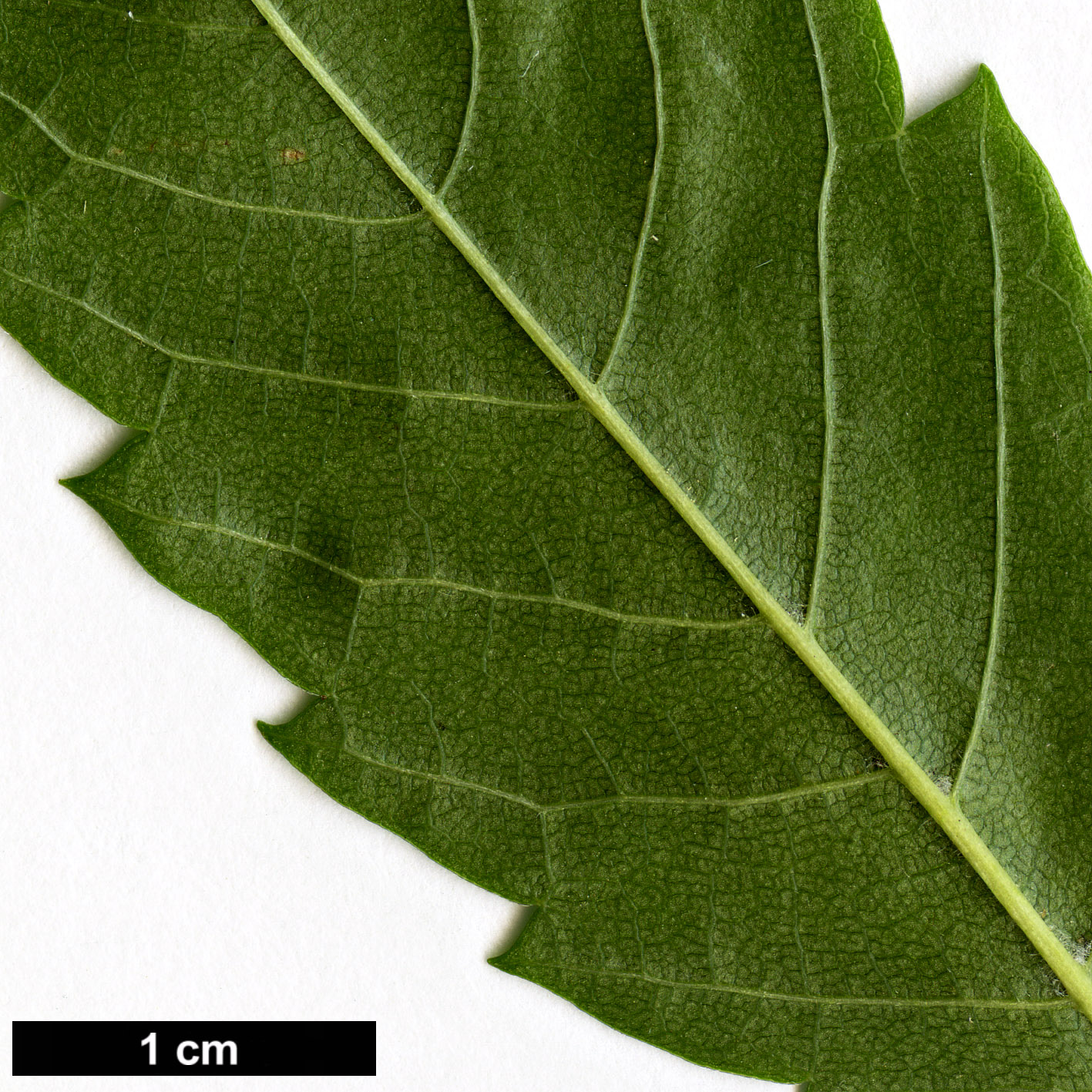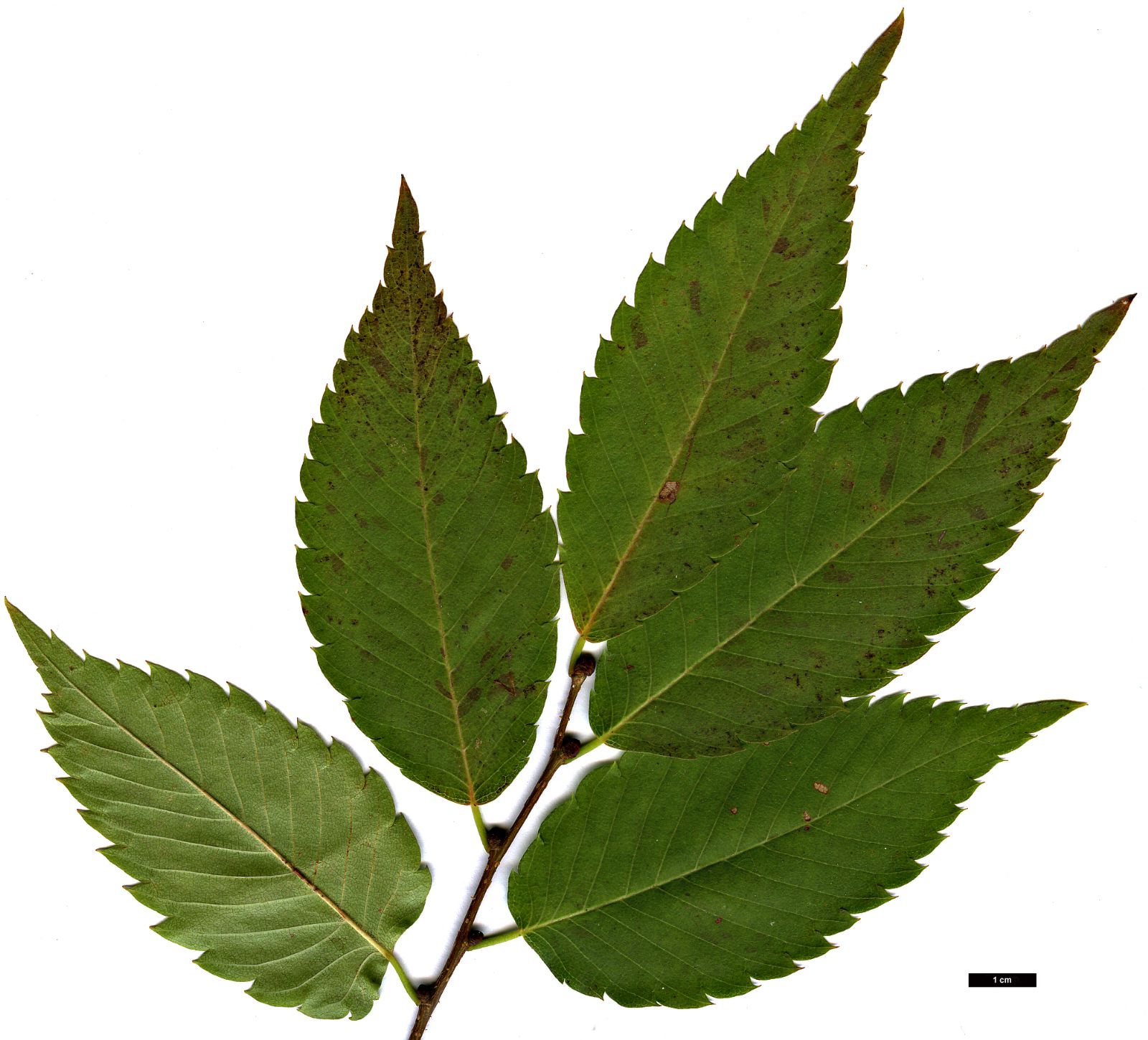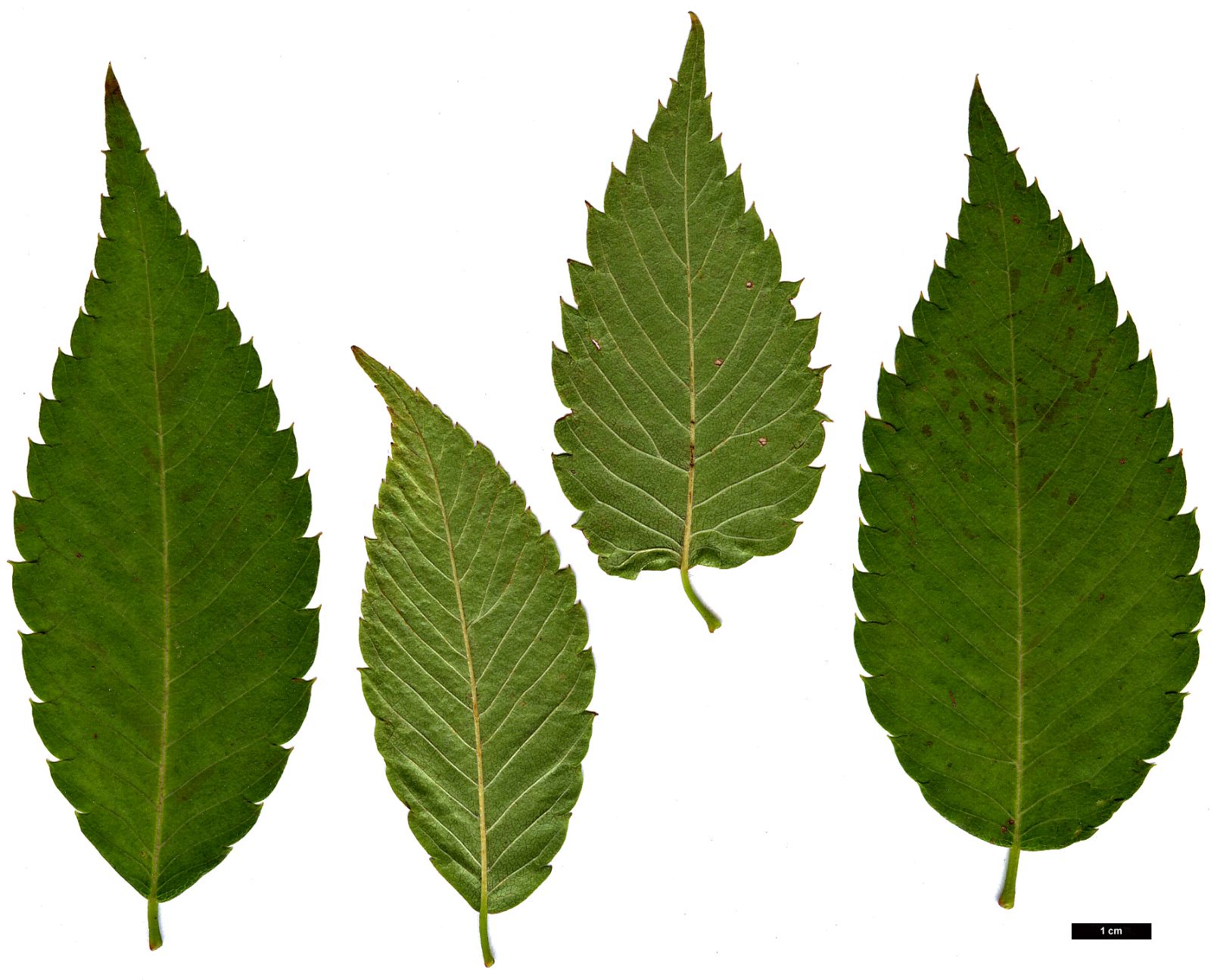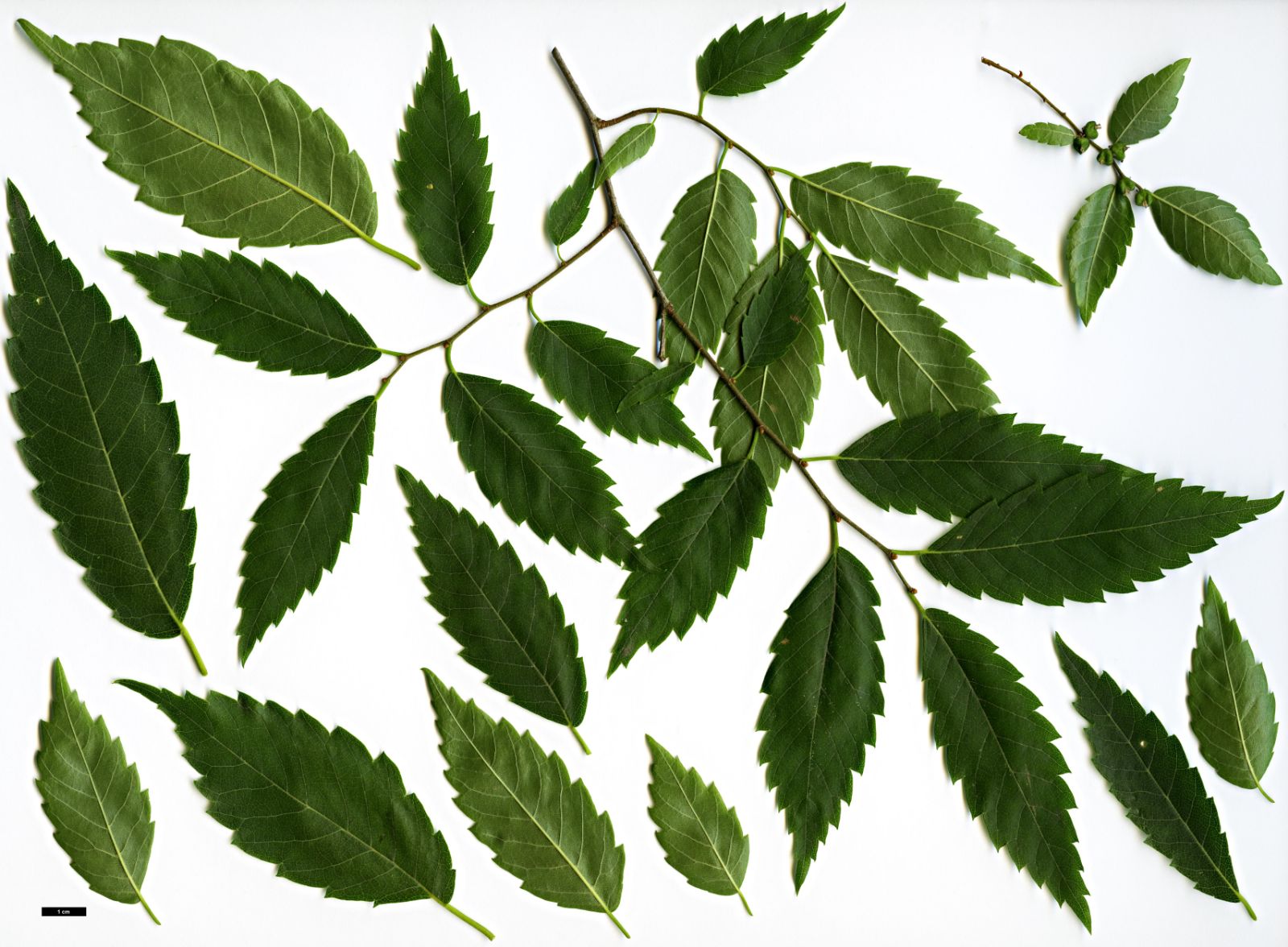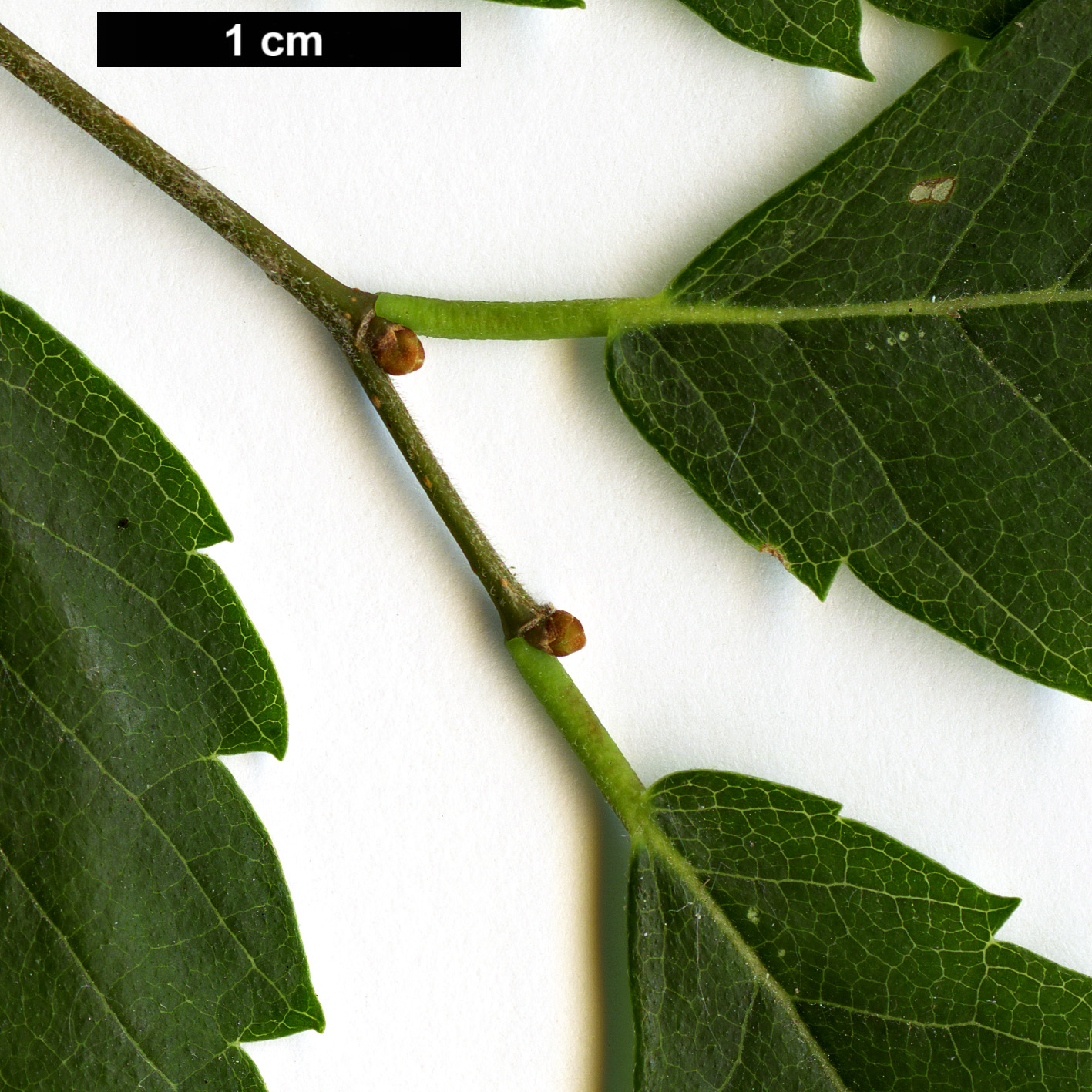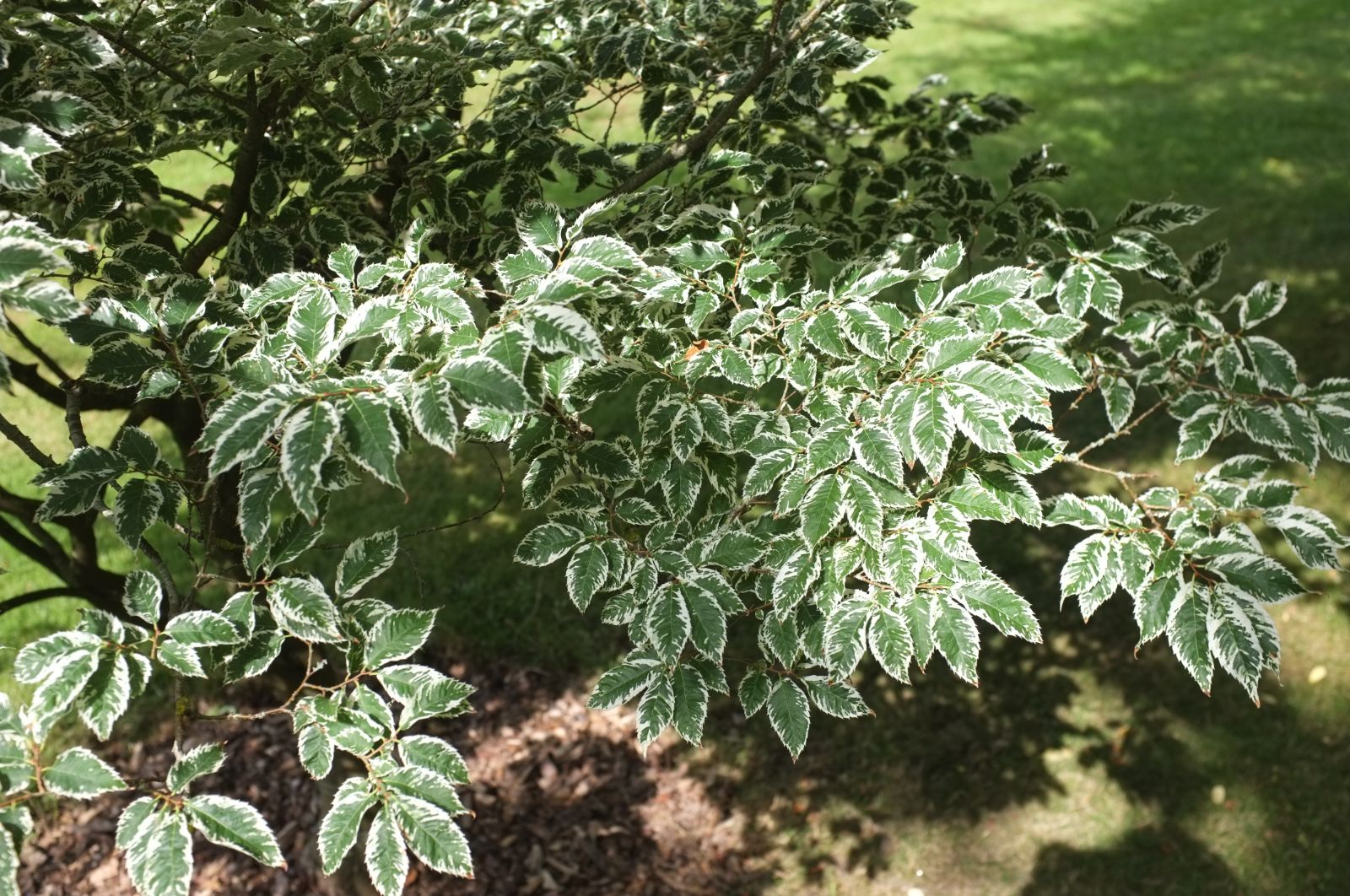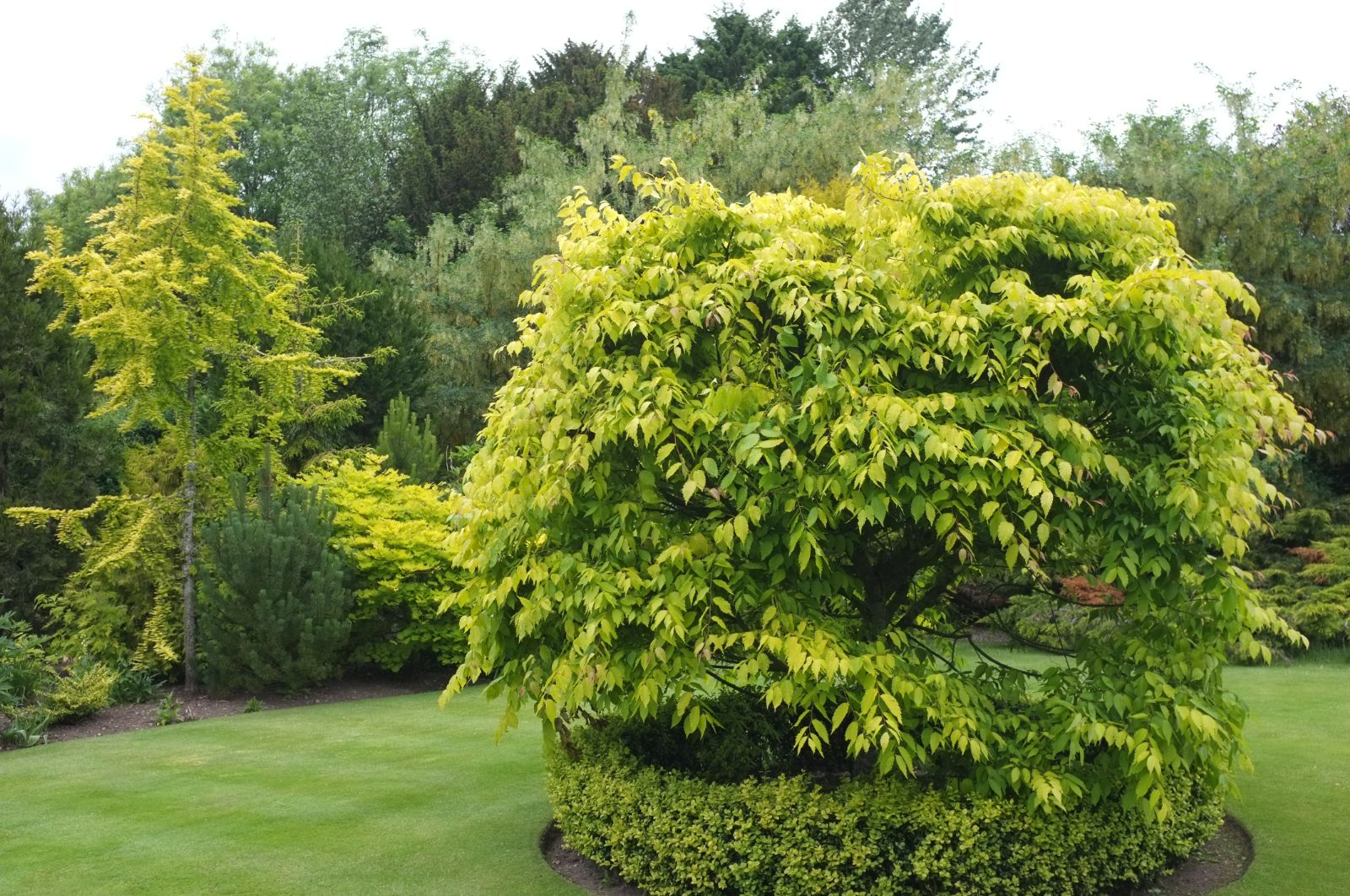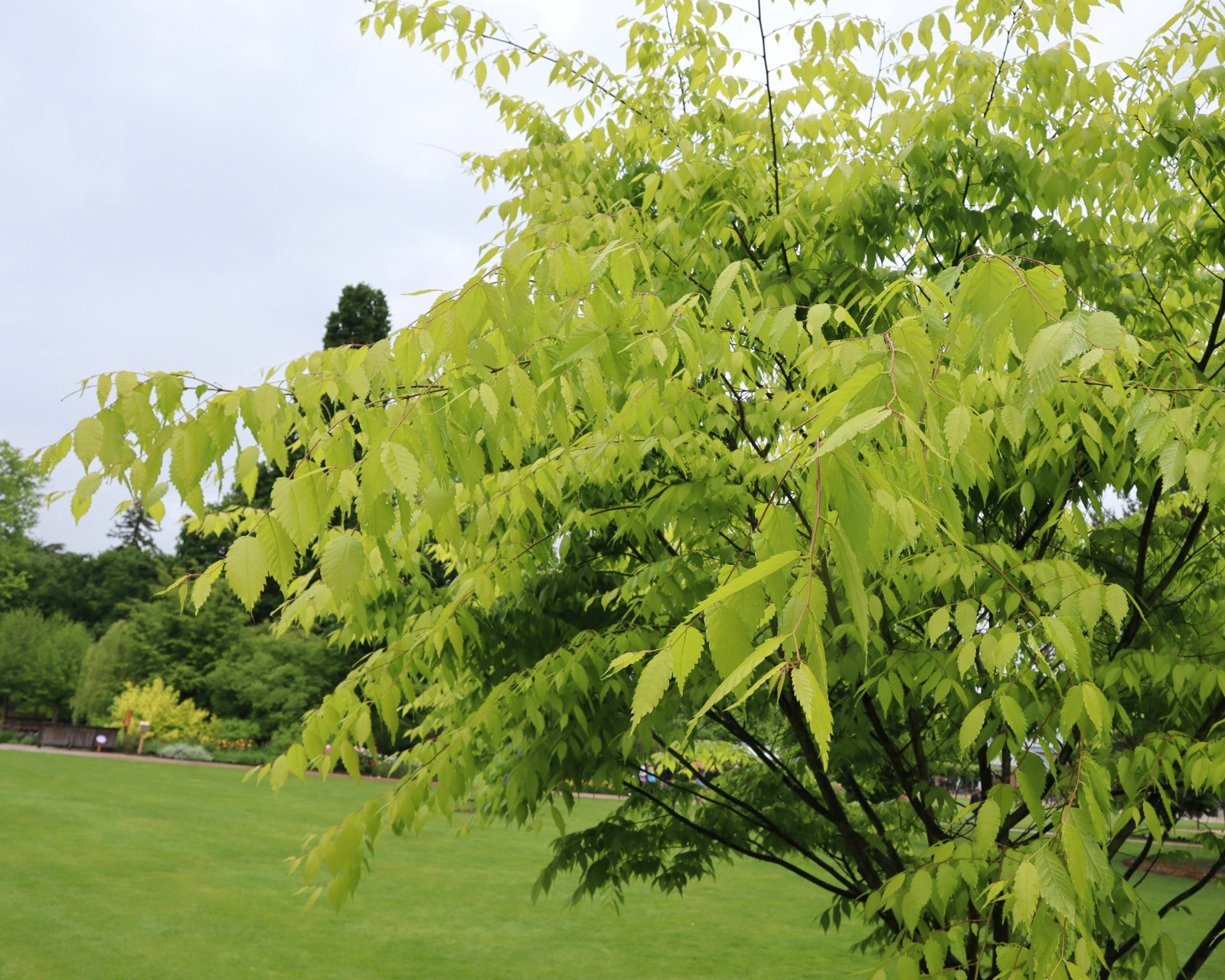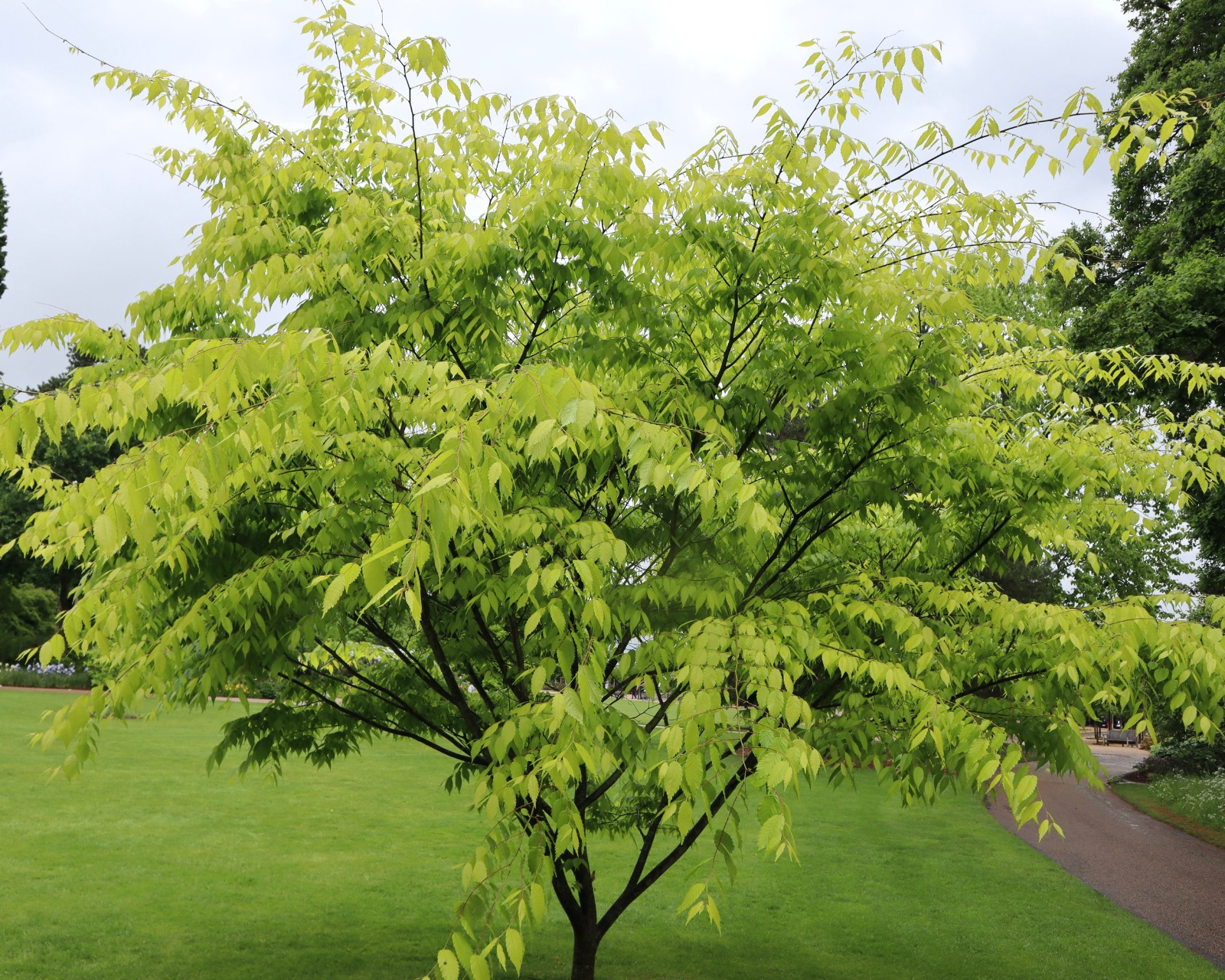Zelkova serrata
Sponsor
Kindly sponsored by
Francine: 'after many informative Tours and Study Days with the IDS I feel it only fitting to help and promote such a wonderful organisation'
Credits
Owen Johnson (2023)
Recommended citation
Johnson, O. (2023), 'Zelkova serrata' from the website Trees and Shrubs Online (treesandshrubsonline.
Genus
Common Names
- Keyaki
- Keaki
- Common Zelkova
- Sawleaf Zelkova
- Sawtooth Zelkova
- 榉树 (ju shu)
Synonyms
- Abelicea acuminata (Lindl.) Kuntze
- Abelicea hirta (Thunb.) Schneid.
- Abelicea keaki (K. Koch) C. K. Schneid
- Abelicea serrata (Thunb.) Makino
- Corchorus hirtus Thunb., not L.
- Corchorus serratus Thunb.
- Planera acuminata Lindl.
- Planera kaki Planch.
- Planera keaki K. Koch
- Planera japonica Miq.
- Ulmus keaki Sieb.
- Zelkova acuminata (Lindl.) Planch.
- Zelkova formosana Hayata
- Zelkova hirta (Thunb.) Schneid.
- Zelkova japonica Dippel
- Zelkova keaki (Sieb.) Maxim.
- Zelkova serrata var. longifolia Nakai
- Zelkova serrata var. stipulacea (Franch. & Sav.) Makino
Infraspecifics
Large tree, to 30 m. Bark pale grey to sandy, soon scaling finely to show patches of the yellow to reddish bark, ultimately widely fissured or exfoliating in large, shaggy plates. Young twigs variably hairy, often soon glabrous; buds conic to ovoid. Leaf elliptic to ovate-lanceolate, 3–12 × 1–4 cm, rounded to shallowly cordate at the base which is often slightly oblique, shouldered and acuminate at the tip; major side veins in 6–15 pairs each terminating in a large but shallow round-shouldered tooth, whose sharp tip may be apiculate; thinly papery in texture, finely roughened (hispid) above and variably hairy beneath, often only under the veins; petiole short (2–6 mm). Drupe small (2.5–3.5 mm wide), networked with irregular low ridges. (Fu, Xin & Whittemore 2003; Bean 1981).
Distribution China Anhui, Fujian, Gansu (Qin Ling), N Guangdong, Guizhou, Henan, Hubei, Hunan, Jiangsu, Jiangxi, Liaoning (Dalian), Shaanxi (Qin Ling), Shandong, Sichuan, Zhejiang Japan North Korea South Korea Russia Kuril Islands
Habitat Forests, often over limestone and usually near streams and on shady slopes; to 2000 m in southern China.
USDA Hardiness Zone 5
RHS Hardiness Rating H6
Awards AGM
Conservation status Near threatened (NT)
Zelkova serrata enjoys the broadest natural range of its genus, although like its relatives it seldom seeds abundantly and its distribution has become increasingly scattered, resulting in its recent reassessment by the IUCN as a Near Threatened species (Kozlowski et al. 2018). It is the only zelkova native to Japan, where it provides the most valuable and durable of timbers, which was used for battleships; traditional taiko drums were hollowed from sections of a single trunk (Kozlowski et al. 2018). The qualities of its timber were detailed by H.J. Elwes (Elwes & Henry 1906–1913), who considered that to grow trees of timber quality it should be planted densely, perhaps amongst other species, to draw up a long clean bole. In Japan the species has long been planted for ornament and specimens preserved at shrines may be more than a thousand years old; the Noma Keyaki at Nose near Osaka has a trunk nearly 4 m wide (Wikipedia 2023). The young leaves are served as vegetables in Japanese cuisine (Kozlowski et al. 2018) and are used along with the bark in traditional Chinese medicine (Fu, Xin & Whittemore 2003); compounds relevant to cancer treatment can be extracted from the twigs (Kozlowski & Gratzfeld 2013). More recently, the species has found favour as a forestry tree, with large plantations being made across east Asia, but since these plants have been selected for their health and vigour they seldom contain much genetic diversity (Kozlowski & Gratzfeld 2013).
This species is closely related to the Chinese Zelkova schneideriana, which is characteristically a hairier tree with very scrubby, elm-like leaves. An isolated population in Taiwan, long considered to belong within Z. serrata, was shown through genetic analysis in 2019 to represent Z. schneideriana (Naciri et al. 2019). In Japan, a particularly pubescent local population, which is occasionally distinguished as Z. serrata var. stipulacea (Franch. & Sav.) Makino, also shares features with Z. schneideriana (Grimshaw & Bayton 2009).
The Japanese word for Zelkova serrata, Keyaki – alternatively transliterated as Keaki – serves well as a vernacular name for use in the west. In the United States the species is more likely to be known as the ‘Common Zelkova’ but this seems less appropriate in Europe, where Z. carpinifolia has been planted about as widely. In France the name Orme de Sibérie (‘Siberian Elm’) is sometimes used, but this invites confusion with Ulmus pumila – an elm which does grow in Siberia – and also perhaps with U. parvifolia, a northern Chinese elm whose dark but dainty leaves and whose orange-flaking bark can look remarkably like a zelkova’s.
Zelkova serrata is the kind of plant whose year-round elegance can catch the eye of people who tend not to notice trees – although only a much more select group will be able to name it with confidence. The finely flaking but otherwise smooth, multi-coloured bark has a stone-like quality; the crown typically branches widely but daintily, and in winter the twigs are almost ethereally fine. The fish-shaped leaves – much longer-pointed than those of Z. carpinifolia – are held gracefully at a declining angle, and can turn gold, bronze or even crimson in autumn.
Zelkova serrata was smuggled from Japan to Holland by Philipp von Siebold as early as 1830 (Jacobson 1996); two original trees still grow in the Hortus Botanicus Leiden where the largest had a dbh of 95 cm in 2021 (Hortus Botanicus Leiden 2023; monumentaltrees.com 2023). Elwes & Henry (1906–1913) report on and illustrate a fine specimen at Carlsruhe, Germany, planted sometime between 1859 and 1861, which was 3.1 m in girth by 1904. John Gould Veitch introduced it to Britain as seed in 1862, after Japan had been opened to foreigners. The species was introduced to the United States also in 1862 by George Rogers Hall, who had worked as a physician in China and retired to Bristol, Rhode Island, by way of Japan where he lived in Yokohama for several years and was instrumental in introducing many important Japanese plants to western horticulture for the first time. Zelkova serrata was among a consignment of plants (including Hydrangea paniculata ‘Grandiflora’) personally delivered by Hall in 1862 to the nurserymen Parsons & Co in Flushing, Long Island, New York (Tsukamoto & Creech 2015). By 1893 Hall had hundreds of self-sown seedlings in his garden, but observed that they were vulnerable to elm-leaf beetle. As part of his first commission as a landscape architect at Vernon Court, Newport, in the same state, around 1886, Frederick Law Olmsted obtained several plants from Hall including three mature Keyakis; one survivor there now has a 26 m spread and a trunk 1.7 m wide (Elwes & Henry 1906–1913; National Museum of American Illustration 2023). Other trees distributed by Hall grow throughout the northeastern USA, including in the Arnold Arboretum, where the largest has a dbh of 117.2 cm (Arnold Arboretum 2023).
The performance of this specimen is characteristic of the species as a whole in the continental climate of the eastern and north-eastern States, and has helped recommend Keyaki for widespread planting, particularly as a street tree to replace specimens of Ulmus americana lost to Elm Disease. (As is the case with other zelkovas, the foliage is not very palatable to the beetles (Scolytus spp.) which spread Elm Disease, and plenty of trees are likely to survive even the severest outbreaks.) Several fine examples grow in continental and southern Europe – for example a superb specimen in the botanic garden in Florence, Italy, illustrated below – while in north-western Europe, older Keyakis are likelier to be multi-stemmed from the base, probably as a result of early damage from late spring frosts which in the climate of the early twentieth century were identified by both H.J. Elwes and W.J. Bean as problem for this tree (Elwes & Henry 1906–1913, Bean 1981). Decay is likely to develop in the weak forks which result, limiting these specimens’ potential longevity. A seedling from BECX 263, planted in 1982 at the Royal Botanic Gardens, Kew, was allowed to branch widely from the base; half the tree collapsed after just forty years (Tree Register 2023). Fortunately, one grown by Stephenson Robert Clarke (who went on to create the remarkable gardens at Borde Hill in West Sussex) from seed sent from Japan by his brother in 1890, and planted right next to Lower Sherriff Farmhouse at nearby Horsted Keynes, has grown impeccably and still stands like an arboreal umbrella over the entire cottage. Similarly shapely is the UK champion at Tyntesfield in Somerset which must be about as old and had a trunk 1.34 m broad in 2016 (Tree Register 2023). Although examples planted further south in Europe tend to grow more freely Zelkova serrata is tough enough to have made a 13 m tree as far north as the Craigtoun Country Park in Fife, Scotland (Tree Register 2023); it has also been cultivated since 2001 at the Linnaean Garden in Uppsala, Sweden (Royal Botanic Garden Edinburgh 2023).
Zelkova serrata has certainly been slower in Europe than in North America to attract the sort of interest which it surely deserves; specimens began to be planted outside the biggest gardens in the 1960s and continue steadily to become more widespread. Autumn colour is at its best in a continental climate, as may be observed in the eastern United States, but even in the oceanic climate of the UK tends towards mixture of pale yellows and russets, varying from one specimen to the next and often lasting late into the year.
This is perhaps the easiest Zelkova species to raise from seed, and is consequently cultivated in considerable diversity – something which is indicated by the range of autumn colours. Recent collections to enjoy relatively wide distribution through major collections include BBJMT 183, BCJMM 275, SADO 137 (a specimen of which was planted at Kew in 2003 and was already 8 m tall in 2022) LORI 64 and KE 3668 (Tree Register 2023; Royal Botanic Garden Edinburgh 2022). In 2020 BSWJ 8491, from South Korea, was available from Crûg Farm Plants (Royal Horticultural Society 2020). BECX 227, mentioned earlier, is also traceable to South Korea but is restricted to major collections (Royal Botanic Garden Edinburgh 2022), as are Bristol & Meyer 170 and 171, and Spongberg & Weaver 458, distributed through North American collections (Arnold Arboretum 2023).
Zelkova serrata is also successful as an ornamental in south-eastern Australia and in New Zealand, where the yellow-leaved forms ‘Goldenflame’ and ‘Kiwi Sunset’ have, respectively, arisen. It was planted in 2011 in the Australian National Arboretum at Canberra (National Arboretum Canberra 2023).
Perhaps because it is more likely to be propagated from seed than its allies, Zelkova serrata has so far been much the most productive zelkova for garden sports. In the search for superior street trees, many selections have also been made in the United States which seek to limit the species’ naturally wide-spreading habit, though sometimes at the expense of its natural grace; a few of these are just beginning to gather favour in Europe.
'ASFKF'
Synonyms / alternative names
Zelkova serrata MYRIMAR®
A heat-tolerant selection made by Pritchard’s Nursery, Georgia (USA); autumn colour orange-brown (Dirr 2009; Hatch 2021–2022).
'Burgundy Vase'
Synonyms / alternative names
Zelkova serrata 'Burgundy Fall'
A clone selected for its rather upright habit (like that of GREEN VASE), combined with deep red autumn colour. It is represented at the Bartlett Tree Research Laboratories by a plant received from Carlton Plants as ‘Burgundy Vase’ (Royal Botanic Garden Edinburgh 2023), but has been sold in the UK by Bluebell Nursery and Arboretum and in Belgium by Les Jardins du Florilège as ‘Burgundy Fall’ (Bluebell Arboretum and Nursery 2023; les Jardins du Florilege 2023). While both plants appear likely to be the same, it is not clear which name is the original and correct form.
'C Creek 1'
Synonyms / alternative names
Zelkova serrata GOLD FALLS™
A rather dense and upright but graceful selection, with yellow autumn colour, selected at Charlie’s Creek Nursery in South Carolina in 2008 (Dirr 2009).
'Flekova'
Synonyms / alternative names
Zelkova serrata GREEN VASE®
Released by Princeton Nurseries before 1983 (Hatch 2021–2022), GREEN VASE® is one of several selections of Zelkova serrata made in the United States, primarily for street planting, which are narrower and more erect than the wild species tends to be. Its dark green leaves can turn orange and red in autumn. Michael Dirr considers it the finest of this group – vigorous in youth, reliably healthy and particularly shapely (Dirr 2009). More recently, GREEN VASE® has become available in western Europe at large standard sizes.
'Fuiri Keyaki'
Common Names
Variegated Keyaki
Synonyms / alternative names
Zelkova serrata 'Fuiri Keaki'
Zelkova serrata 'Green Mansions'
Zelkova serrata 'Variegata'
The first introduction to the west of a variegated Zelkova serrata may have been Pl 1236254, grown at the Glenn Dale Plant Introduction Station in Maryland (USA) in 1959 as ‘Fuiri Keaki’ (‘variegated Keyaki’; Hatch 2021–2022). The latinate form of the western sale name, ‘Variegata’, would only seem to be valid if it was published before this year. Confusion readily arises with ‘Goshiki’, introduced from Japan in 1978 by Barry Yinger (Jacobson 1996), but goshiki means ‘five-coloured’ in Japanese and is best reserved for plants with a much-broken variegation which is pinkish in new leaves then becomes a mix of yellows and whites. ‘Fuiri Keyaki’ by contrast has clear silvery variegation which is not sharp-edged but is mostly concentrated around the margin of the leaf, making this one of the showiest of variegated trees. Mark Weathington (in the comments to ‘plant of the day’ for 9th September at Weathington 2013) observes that ‘Variegata’, in contrast to ‘Goshiki’ is a ‘somewhat weak grower’ in the climate of North Carolina, and no mature examples have been seen by the author in the UK. ‘Green Mansions’ seems to be another sale name for ‘Fuiri Keyaki’ (Klyn Nurseries 2023); in the climate of Ohio at least, the green part of the leaf turns orange-red in autumn and the white part turns pinkish.
'Glodell'
Synonyms / alternative names
Zelkova serrata AUTUMN GLOW®
A compact and shapely selection with rich, purplish autumn colour, released in 1990–1 by the Femrite Nursery, Oregon, USA (Jacobson 1996; Dirr 2009).
'Goblin'
A dwarf sport. The maximum height is usually suggested to be about a metre, but like many miniature plants ‘Goblin’ tends to partially revert with age, growing faster and faster; a long-neglected example in one of the late Maurice Mason’s great Norfolk gardens was 8 m tall in 2019 (Tree Register 2023). A specimen grows at the Betty Ford Alpine Gardens, at an altitude of nearly 2500 m in Colorado (Royal Botanic Garden Edinburgh 2023).
'Goldenflame'
A plant with yellow young leaves, found in Victoria, Australia, by John Ciccolella in 2002 (Hatch 2021–2022). ‘Goldenflame’ appears very similar to ‘Kiwi Sunset’, a selection which is now better known in Europe (q.v.).
'Goshiki'
Common Names
Variegated Keyaki
Synonyms / alternative names
Zelkova serrata 'Pulverulenta'
‘Goshiki’ (meaning ‘five colours’ in Japanese) was introduced from Japan to the United States in 1978 by Barry Yinger (Jacobson 1996), and has been described as having a speckled variegation which is pinkish as the leaves flush and becomes a mixture of yellows and creams. ‘Pulverulenta’ probably describes the same mutation, but its latinate form would only be valid if it had been published before 1959. According to Mark Weathington (in the comments for ‘plant of the day’ for 9th September at Weathington 2013), ‘Goshiki’ is more vigorous in the climate of North Carolina than ‘Fuiri Keyaki’ (‘Variegata’) which has a more solid silvery variegation, but there seems to be much confusion between these two selections. ‘Goshiki’ may never have been introduced to Europe.
'Groveser'
Synonyms / alternative names
Zelkova serrata SPRING GROVE®
An old tree in the Spring Grove Cemetery, Cincinnati, Ohio has developed a handsome vase shape (about 24 m tall) and its unusually dark leaves turn wine-red in autumn (Jacobson 1996; Dirr 2009). Scions were commercially available by 1989 as ‘Spring Grove’; the clone is regarded by Michael Dirr as one of the best available for street planting in the United States.
'Halka'
A vigorous plant selected for its rather upright habit, whose branching resembles that of a well-grown Ulmus americana (Jacobson 1996). Autumn colour is yellow; the shape is less regular than that of GREEN VASE® (‘Flekova’) (Dirr 2009).
'Illinois Hardy'
‘Illinois Hardy’ was released in 1993–4 by Princeton Nursery, New Jersey, as scions of the single seedling which had survived a hard winter in northern Illinois (North American Climate Zone 5) (Jacobson 1996).
'JFS-KW1'
Synonyms / alternative names
Zelkova serrata CITY SPRITE™
A compact, vase-shaped tree with fresh green summer foliage turning yellow in autumn; selected by Keith Warren for J. Frank Schmidt and Son in Oregon, USA (Dirr 2009).
'JFS KW4ZS'
Synonyms / alternative names
Zelkova serrata ZILERATION™
A compact, upright and shapely clone whose dark green leaves turn rust-red in autumn, released in the United States in 2022 by J Frank Schmidt and Son (Phillips & Gibney 2022).
'JSC Kingsthree'
A sport with drooping shoots and deeply toothed leaves which turn bronze in autumn with darker and redder margins, selected by James Cave at JSC Nursery in Tennessee before 2014 (Hatch 2021–2022; Boone County Arboretum 2023).
'Kiwi Sunset' PBR
Synonyms / alternative names
Zelkova 'Kiwi Sunset'
A yellow-leaved sport arising at the Alenton Nursery, Ashburton, New Zealand by 1997 (Hatch 2021–2022). The young leaves flush pinkish, on red shoots, before turning greenish-yellow and fading through summer to pale green. They can turn bronze or red in autumn (Edwards & Marshall 2019), or brighten to yellow again; the habit is typically broad and shapely, with drooping outer shoots. One of the earliest plantings in Europe was made at Gallery House in Angus, Scotland, as the centrepiece of a Golden Garden designed in 1997; Scotland’s low light levels probably promote the retention of the yellow colour through summer (Tree Register 2023). ‘Kiwi Sunset’ reached North America around 2001 (Dirr 2009), but seems not to have ousted in popularity the older selection ‘Ogon’ there (q.v.). Another very similar clone is the Australian ‘Goldenflame’ (q.v.).
Although ‘Kiwi Sunset’ agrees with Zelkova serrata in foliage details, and although hybrid zelkovas are exceptionally rare, a few authorities have preferred to treat this clone as a seedling of potential hybrid origin (Z. ‘Kiwi Sunset’.) In 2023 the RHS’ plant directory hedged its bets by providing duplicate entries (Royal Horticultural Society 2023).
'Low Weeper'
A selection with a broad, low crown and weeping outer shoots, selected by Arborvillage, Missouri (Dirr 2009).
'Musashino'
Common Names
Upright Zelkova
Synonyms / alternative names
Zelkova serrata 'Musashino Silhouette'
Zelkova serrata 'Iruma Sango'
Zelkova serrata 'Fastigiata'
This is the most strictly fastigiate Keyaki, and has been used for many years as a street tree in Japan; it is named after the Musashino region west of Tokyo. Mature specimens may be 14 m tall but less than five metres wide. ‘Musashino’ was introduced to the United States by J. Frank Schmidt and Son in 2000 (New York State Urban Forestry Council 2016). The selection tends to flush early in spring, and the autumn colour is yellow or orange (Dirr 2009; Beechwood Gardens 2023).
Similar trees are sometimes sold as ‘Fastigiata’ – a latinate name which seems unlikely to be valid – or even as Zelkova carpinifolia ‘Pyramidalis’ (Cappellini Giardinieri 2023). The alternative sale name ‘Iruma Sango’ is probably corrupted, as it means nothing in Japanese.
'Ogon'
Synonyms / alternative names
Zelkova serrata 'Allgold'
Zelkova serrata 'Aurea'
Zelkova serrata 'Bright Park'
Zelkova serrata 'Luminifera'
This yellow-leaved selection may have been introduced from Japan to the United States by Barry Yinger in the 1970s (Hatch 2021–2022). A similar plant was grown in the Balkans by 1992 as ‘Aurea’ (Ljubešić & Wrischer 1992), but this latinate name would only be valid if published before 1959, for which there seems to be no evidence; the same is true for the rarer name ‘Luminifera’ (Royal Horticultural Society 2016). The sale name ‘Bright Park’ first appeared in the United States in Camellia Forest Nursery’s 2006–7 catalogue (Hatch 2021–2022) but also seems likely to represent the same clone; at the Scott Arboretum of Swarthmore College in Pennsylvania it was planted in 2007 as ‘Bright Pink’, which seems to be a particularly unfortunate misprint (Royal Botanic Garden Edinburgh 2023).
The Australian clone ‘Goldenflame’ and the New Zealand ‘Kiwi Sunset’ (q.v.) seem to be very similar again. In online images ‘Kiwi Sunset’ tends to be broader and more shapely as a young tree, but valid comparisons are hard to make. In Europe, unlike in North America, ‘Kiwi Sunset’ has become the most popular of these productions, but ‘Ogon’ is also represented at the Sir Harold Hillier Gardens in England (Royal Botanic Garden Edinburgh 2023).
'Park View'
A shapely upright selection (Jacobson 1996). Michael Dirr (Dirr 2009) observes that it is not hardy in Madison, Wisconsin, but this microclimate (North American Climate Zone 5a) represents the absolute limit for any zelkova.
'Schmidtlow'
Synonyms / alternative names
Zelkova serrata WIRELESS®
A low and spreading clone with red autumn colour, selected by J Frank Schmidt and Son in 2002 (Dirr 2009). The curious trade name was intended to suggest that this tree is so low-growing that it could be planted in streets with overhead utility wires without the risk of it ever fouling them (Hatch 2021–2022).
'Shidare Keyaki'
Synonyms / alternative names
Zelkova serrata 'Green Veil'
Zelkova serrata 'Pendula'
‘Shidare Keyaki’ was introduced from Japan to Brookside Gardens in Maryland, USA, by Barry YInger in 1978, and the American sale name ‘Green Veil’ was published in 1983 (Hahn & Yinger 1983). ‘Shidare’ means ‘weeping’ in Japanese but is a slight misnomer: the clone has rather upright main branches, from which the younger shoots droop gracefully.
A single example grown in the Chapel Wood Arboretum at Windsor Great Park, UK, 14.5 m tall in 2021, is perhaps too crowded to show its natural habit, but it has the elegance characteristic of most Keyakis (Tree Register 2023). This was planted as ‘Pendula’, whose latinate form would only be valid if it had been grown in the west many years before Yinger’s introduction; for this there is no evidence.
'Urban Ruby'
A vigorous tree of rounded habit; its leaves have unusually deep teeth and can turn brilliant red in autumn (Dirr 2009). Although it is a North American selection, ‘Urban Ruby’ seems to have been planted a little more widely in Europe, where it was available by 2002 (Hatch 2021–2022). A 13.5 m tree in the Valley Gardens, Berkshire, UK, is older than this but slightly too crowded to show its habit to best advantage (Tree Register 2023).
VILLAGE GREEN™
VILLAGE GREEN™ was selected at Princeton Nursery, New Jersey, USA in 1964 as a fast-growing straight-trunked tree of rounded habit with rusty-red autumn colour, suitable for street planting (Jacobson 1996). It is considered inferior by Michael Dirr to SPRING GROVE® (‘Groveser’) and to GREEN VASE® (‘Flekova’), while a planting in the old Bristol Zoo site (England) has made a rather scruffy, bushy specimen – a reminder that plants which excel in one microclimate may prove nothing special in a different one (Tree Register 2023). VILLAGE GREEN™ has a reputation for hardiness, and has survived at the University of Maine campus at Orono (North American Climate Zone 5a) where unselected Zelkova serrata seedlings perished. It has proved a failure, however, in Madison, Wisconsin – a city placed in the same hardiness zone (Dirr 2009).

